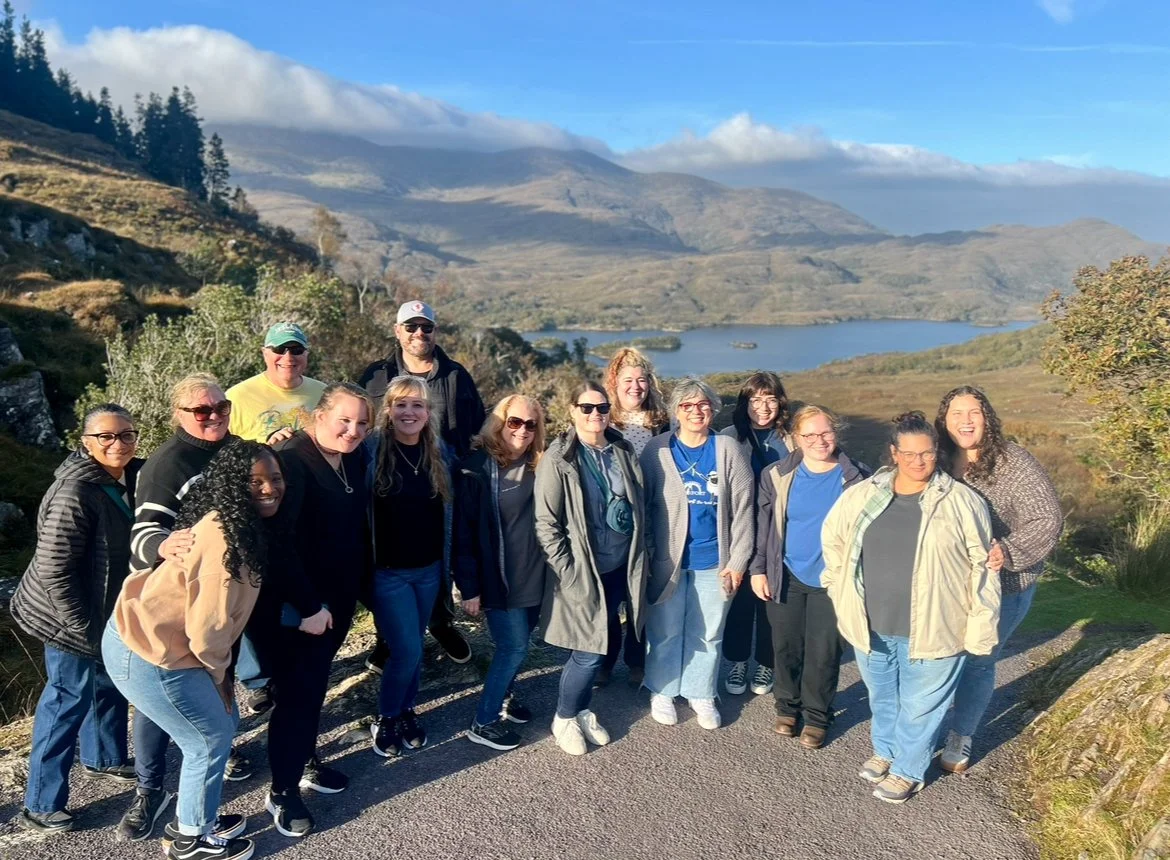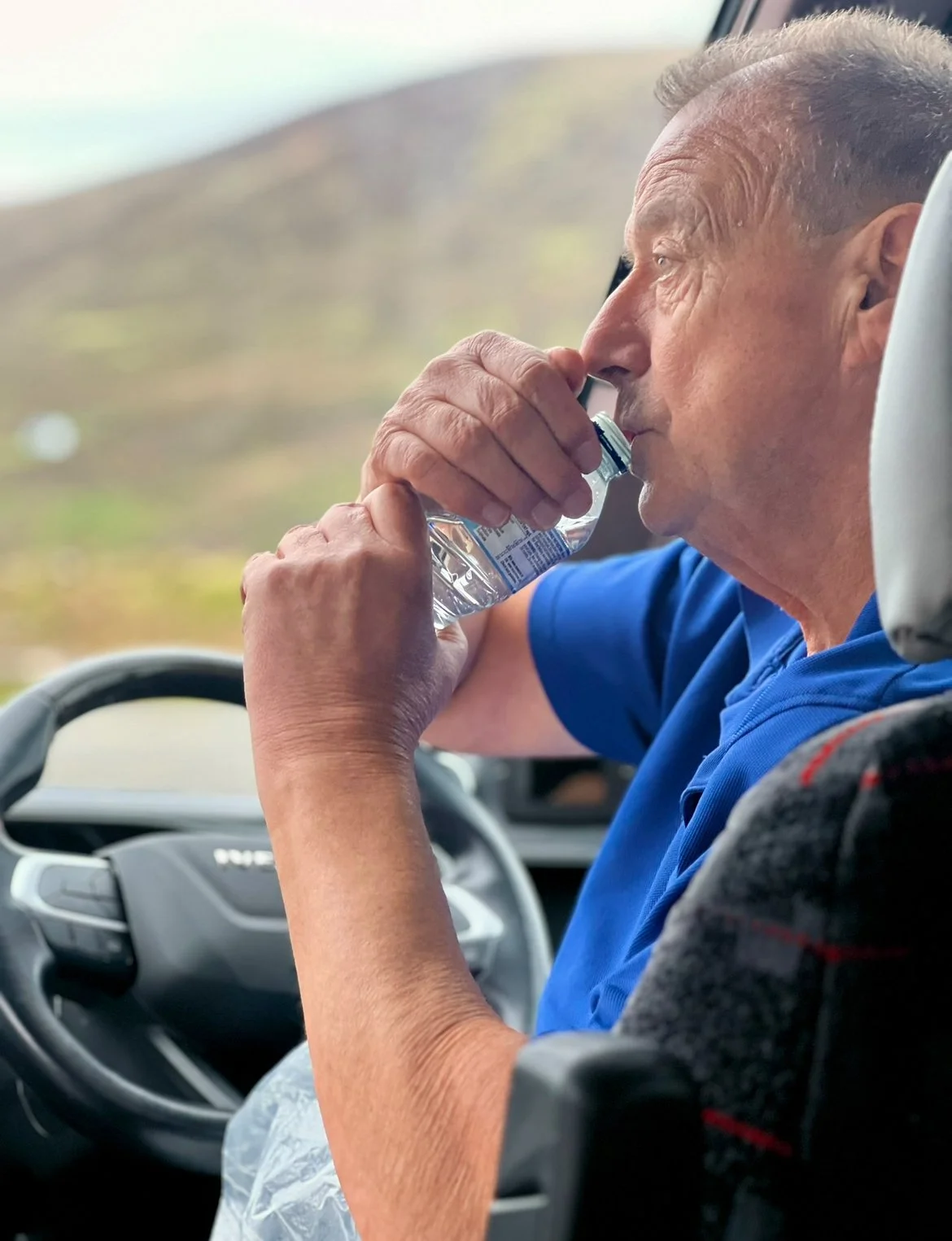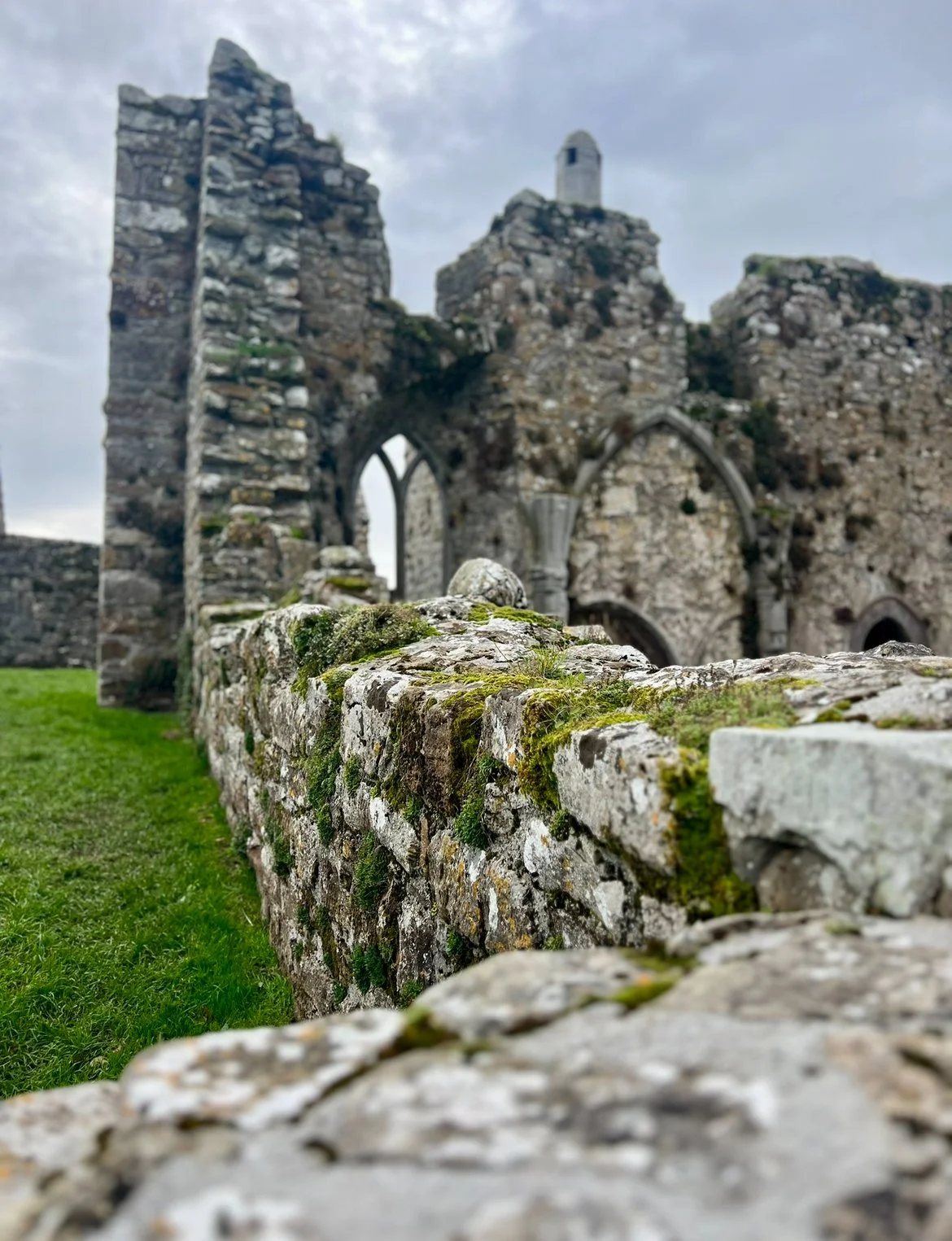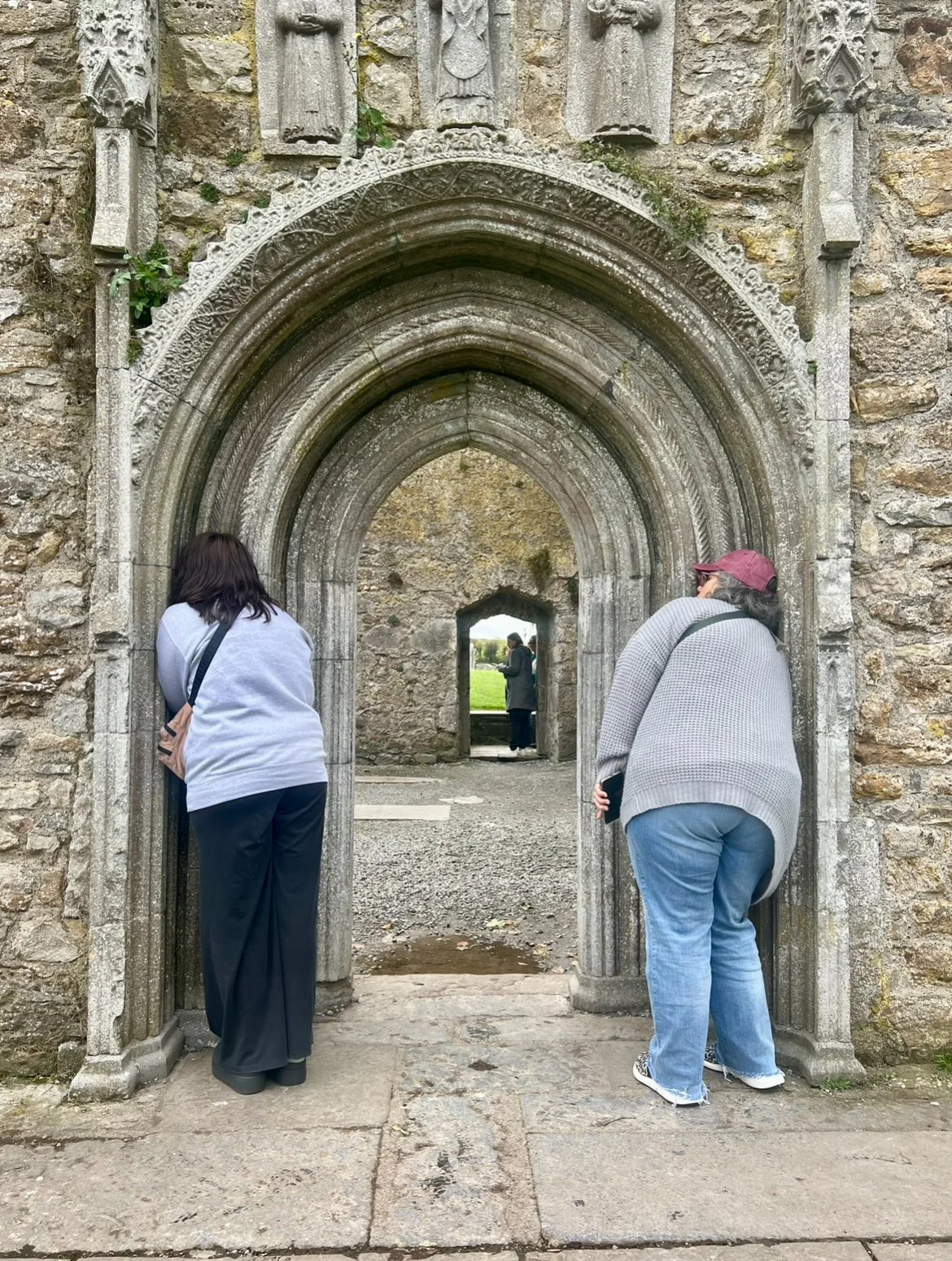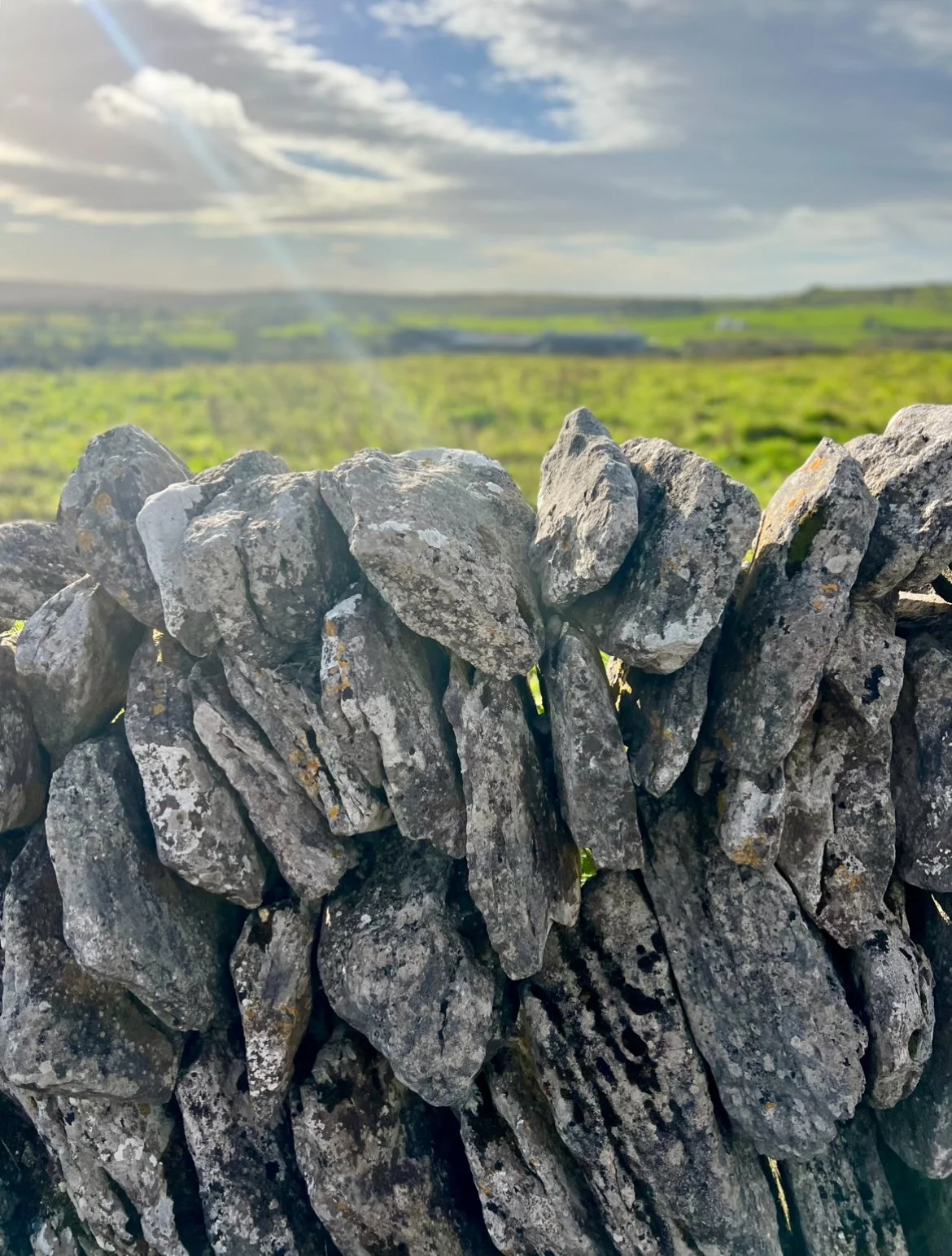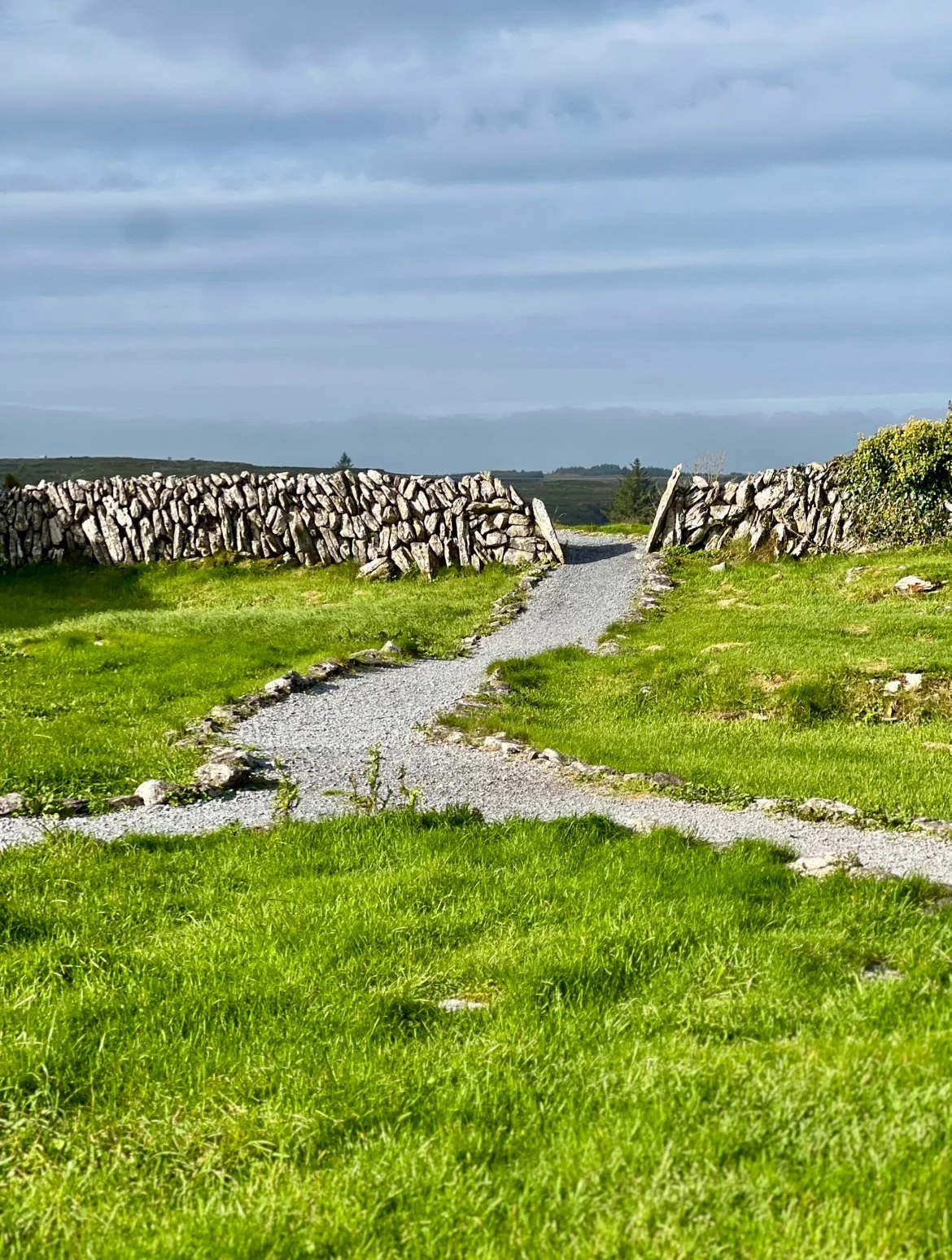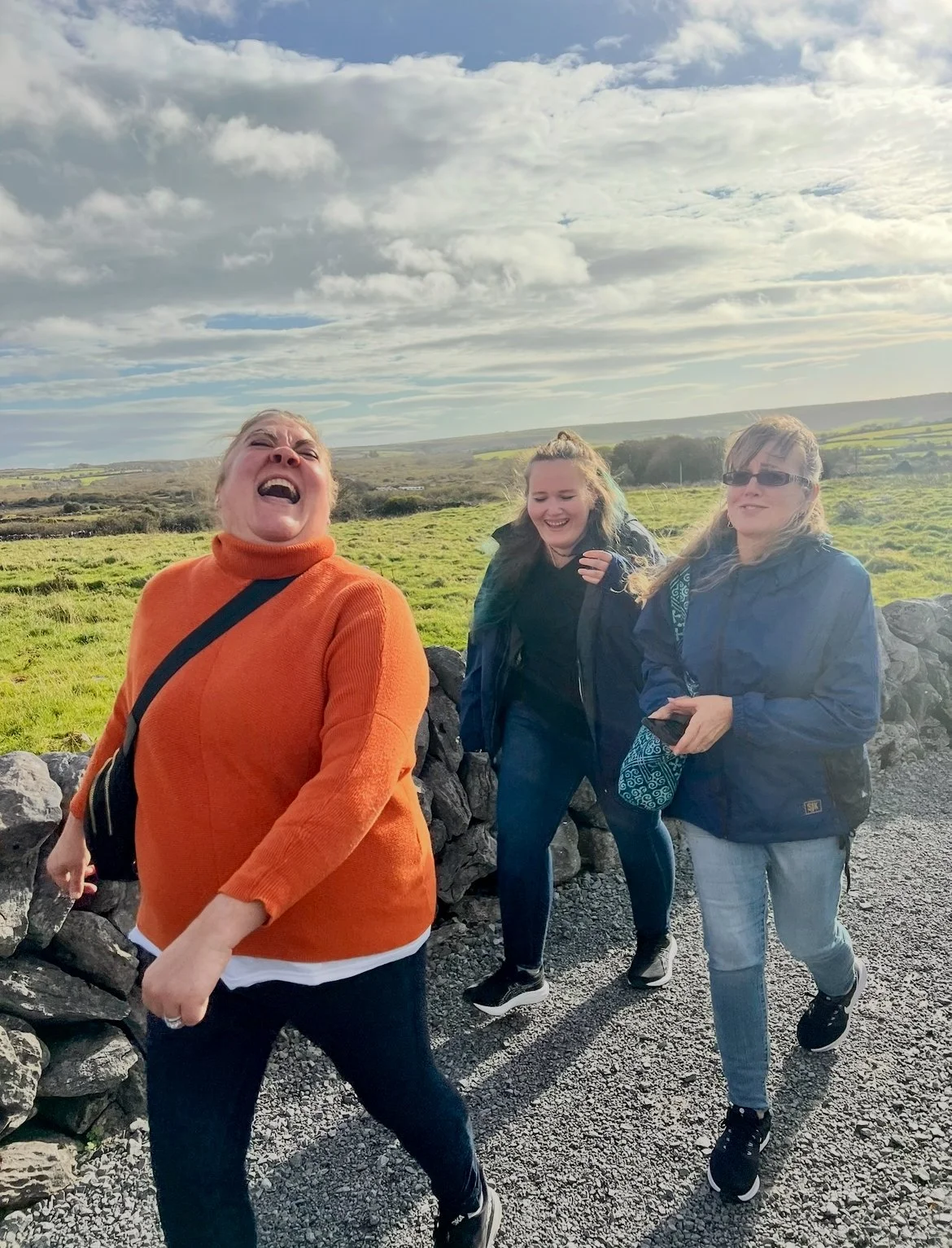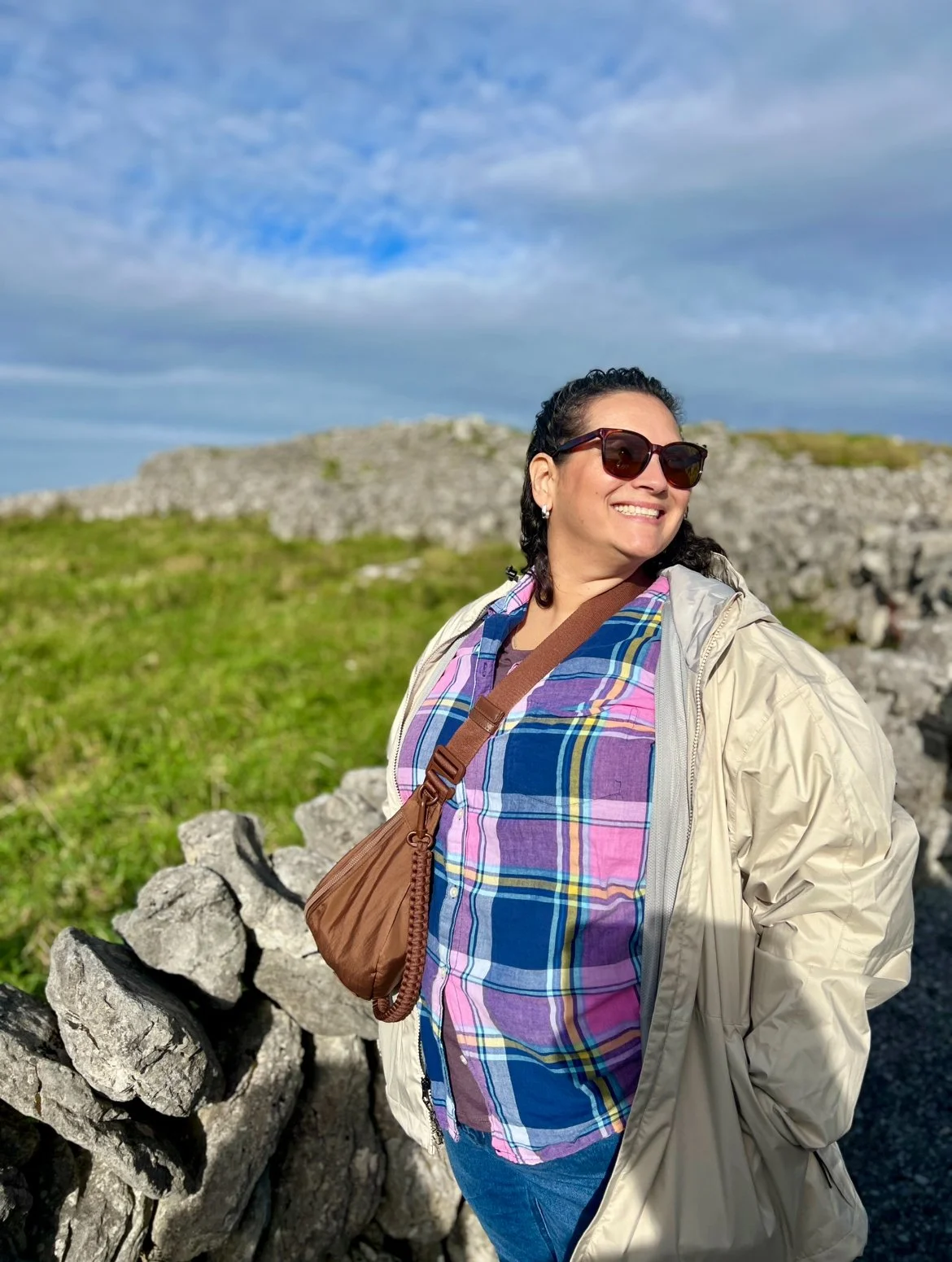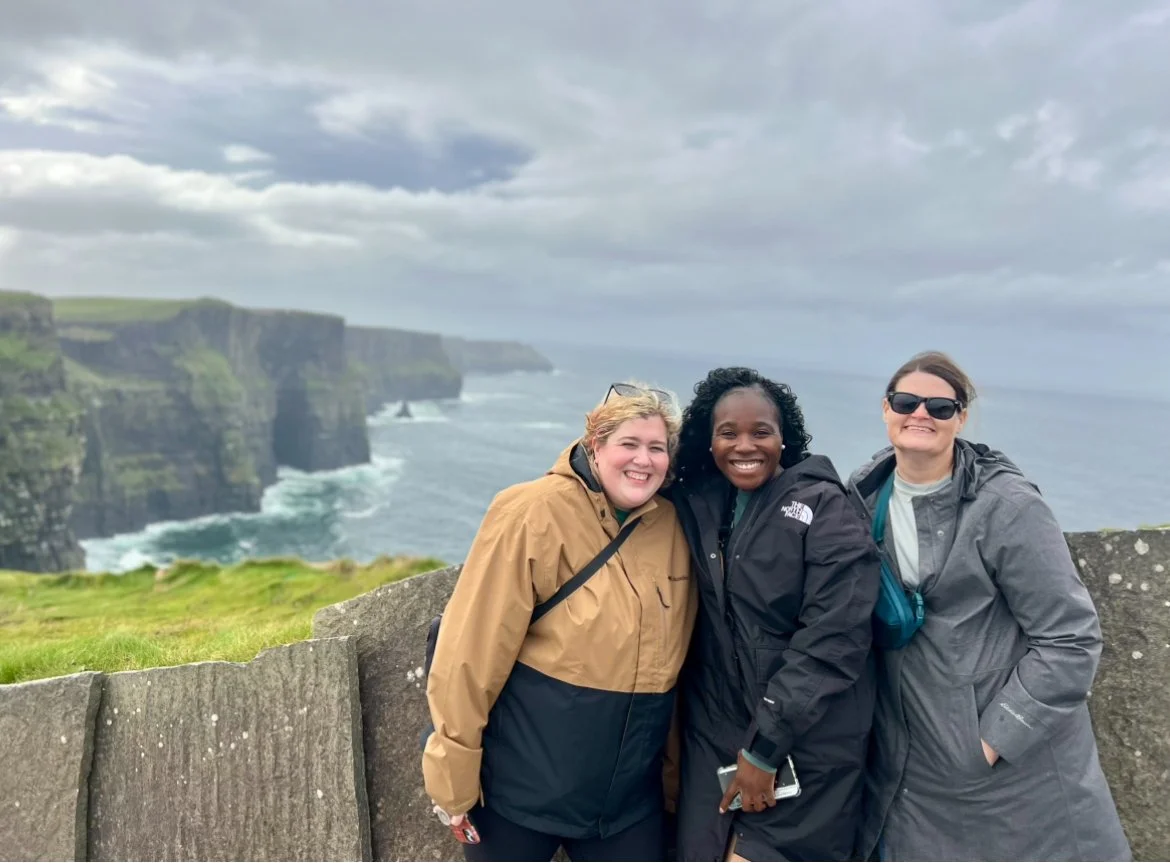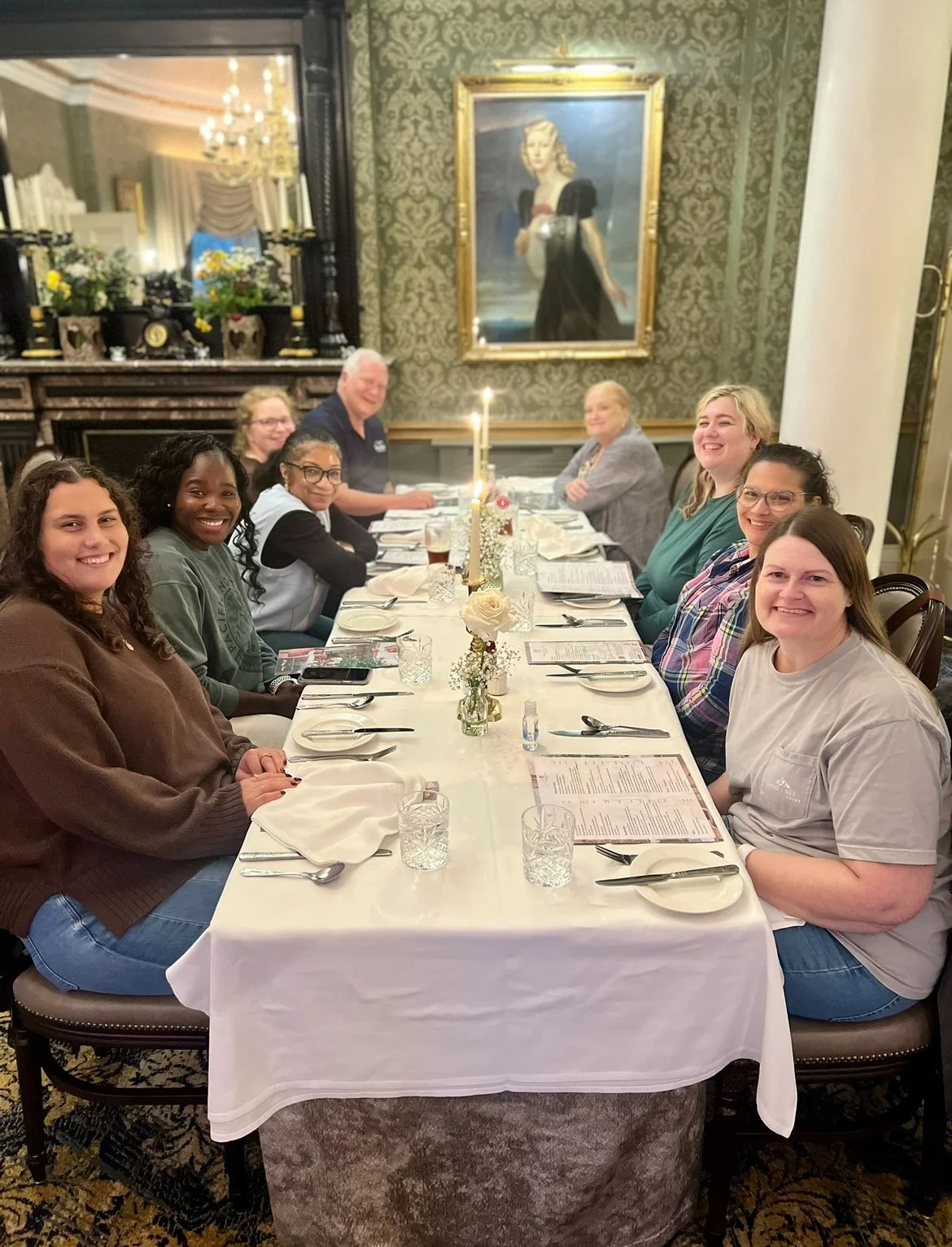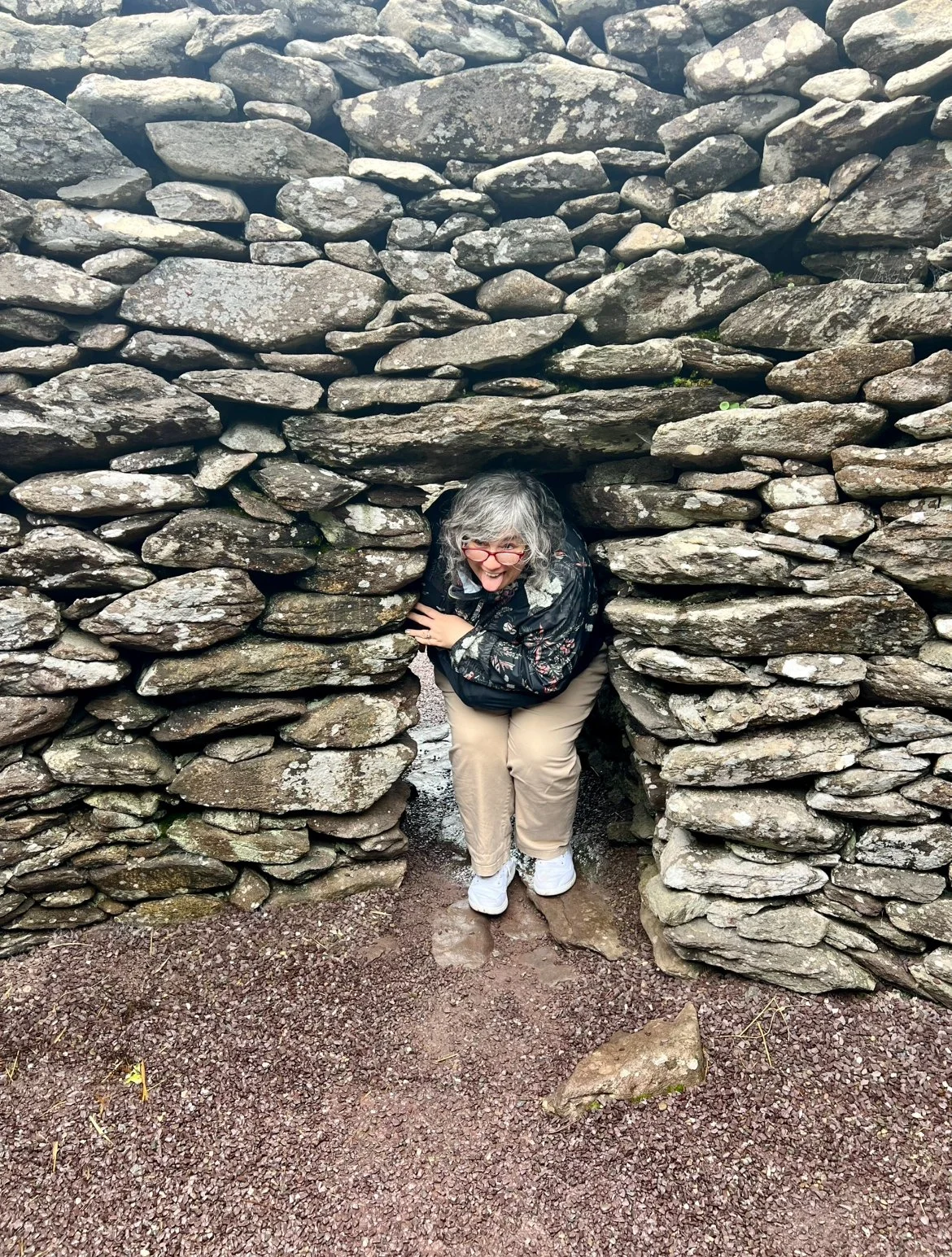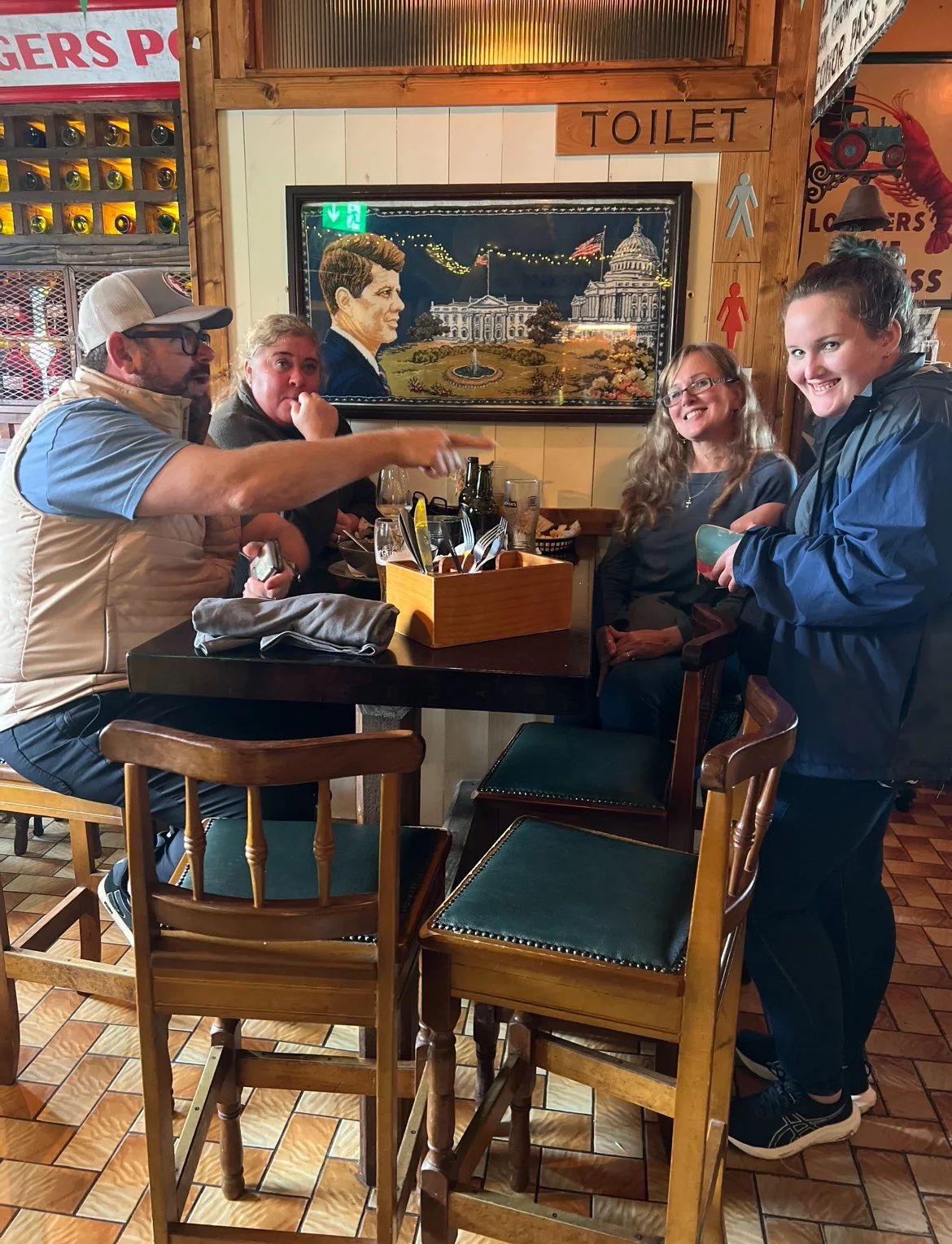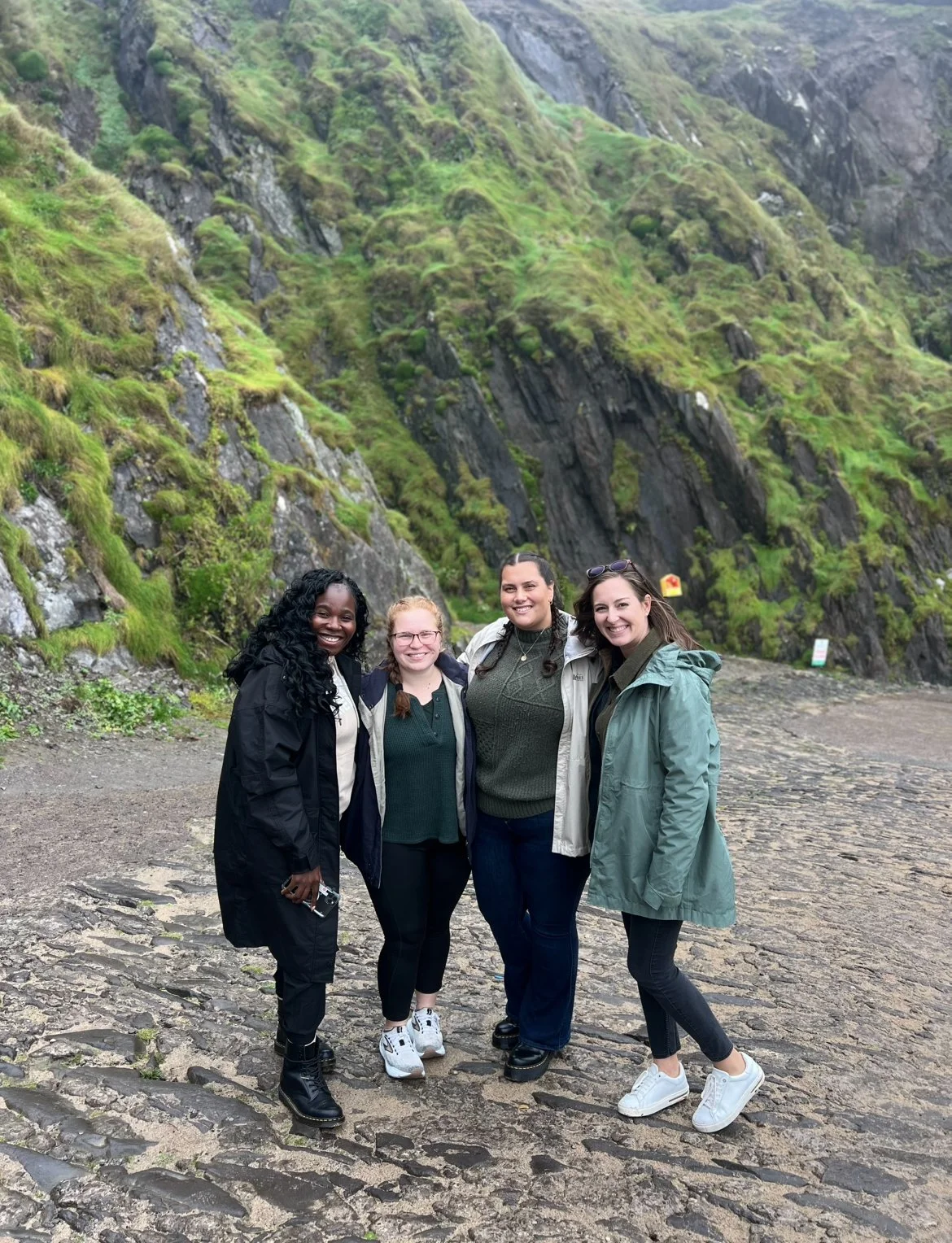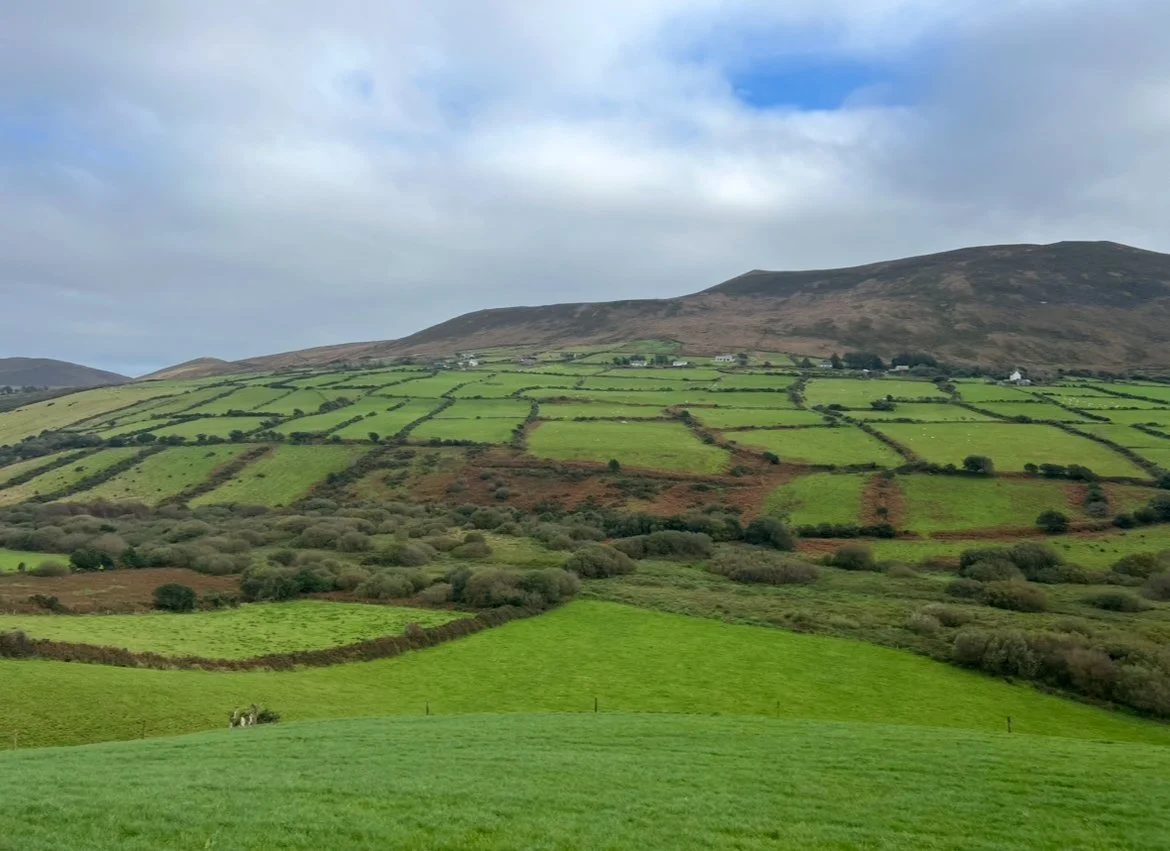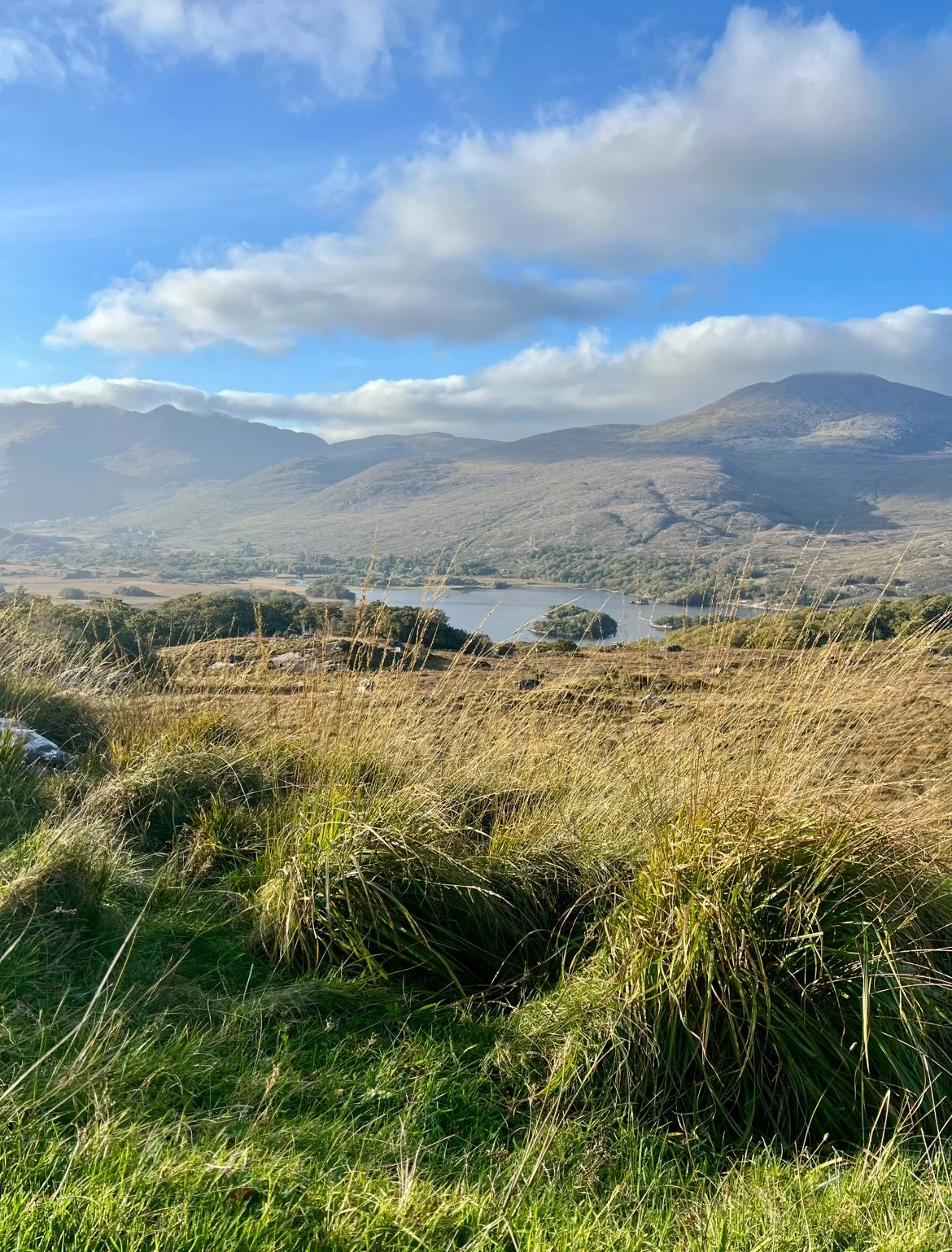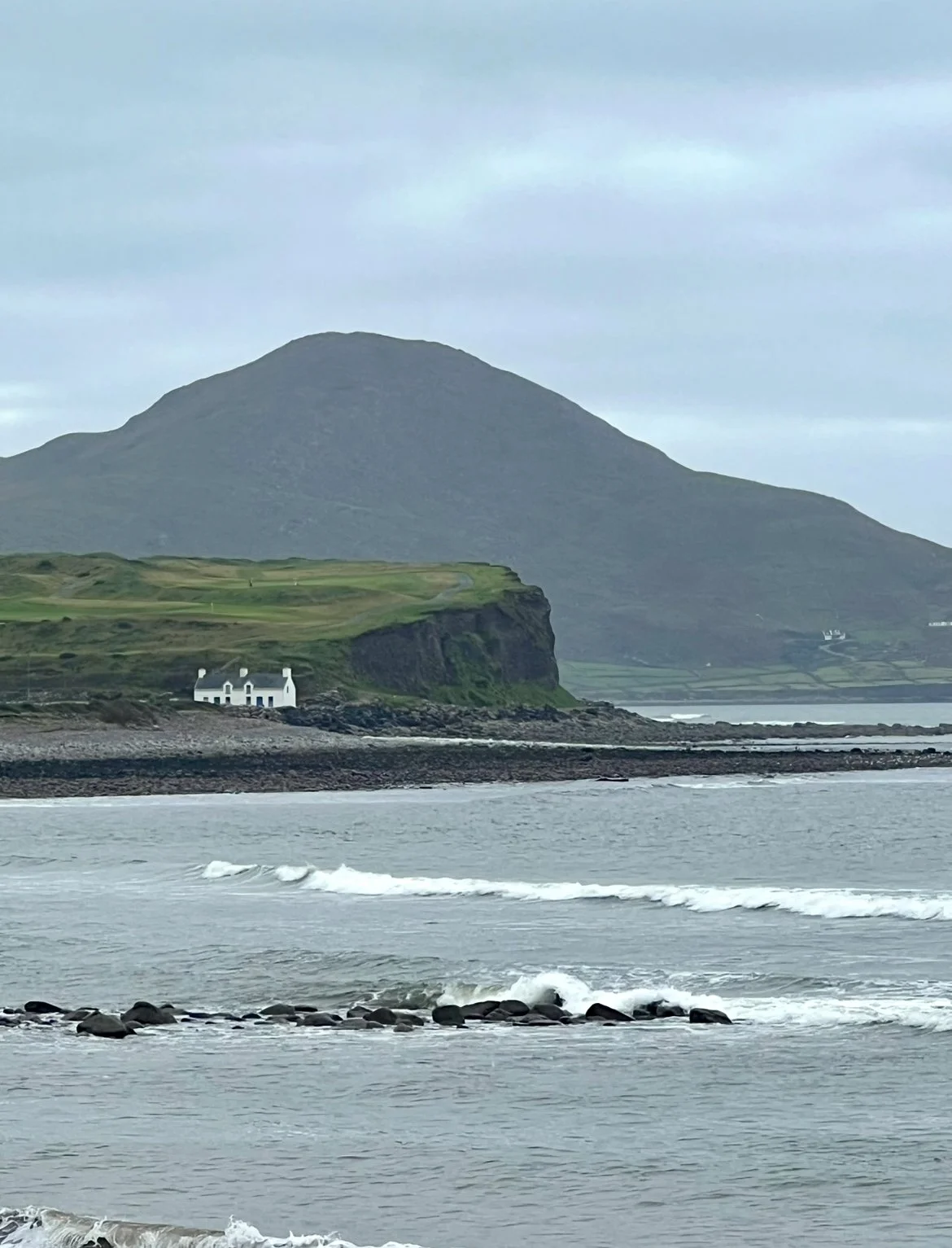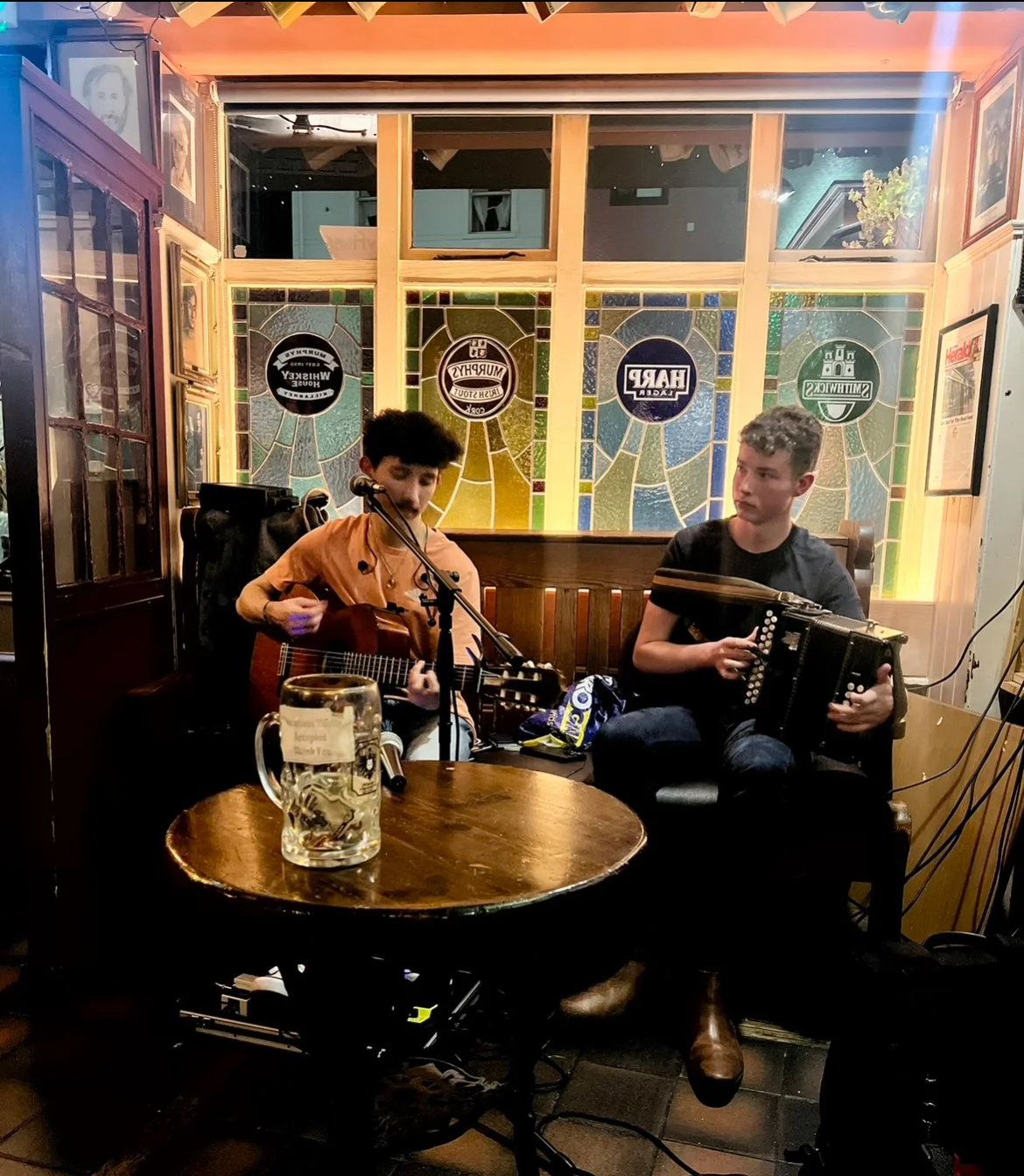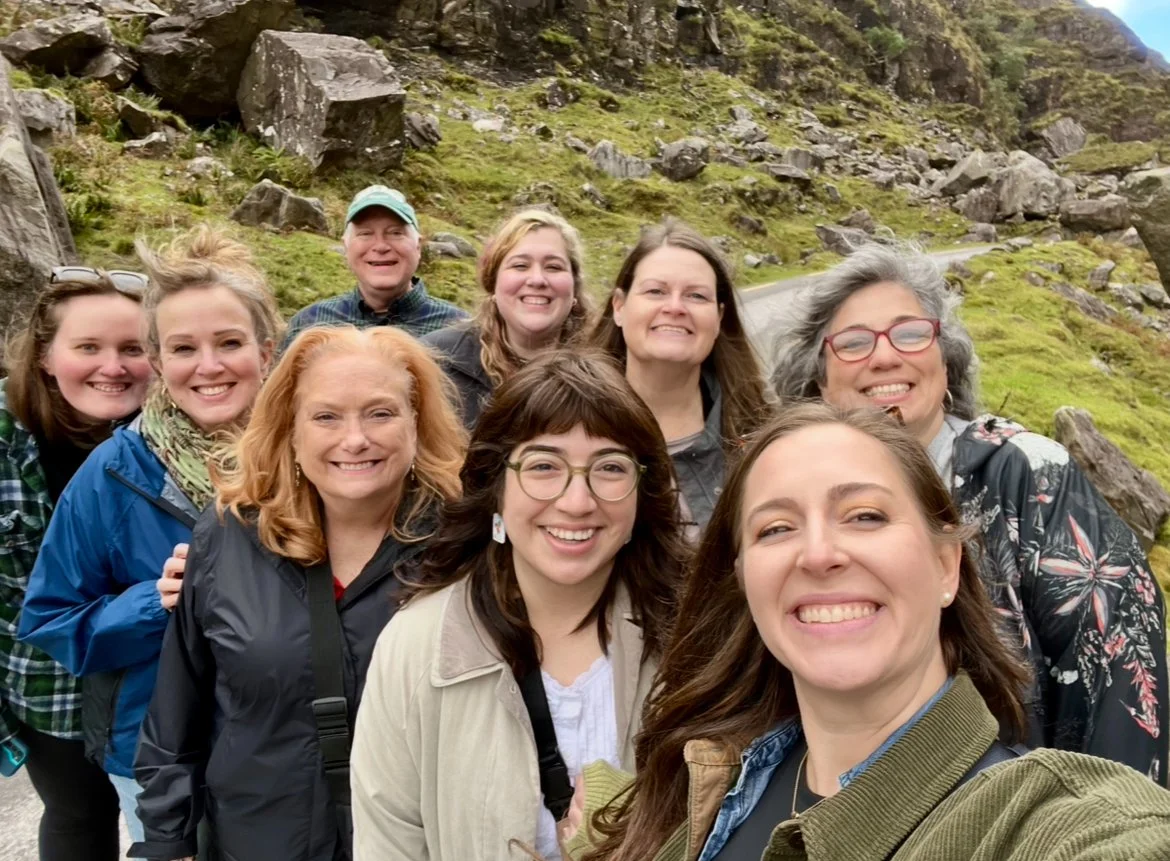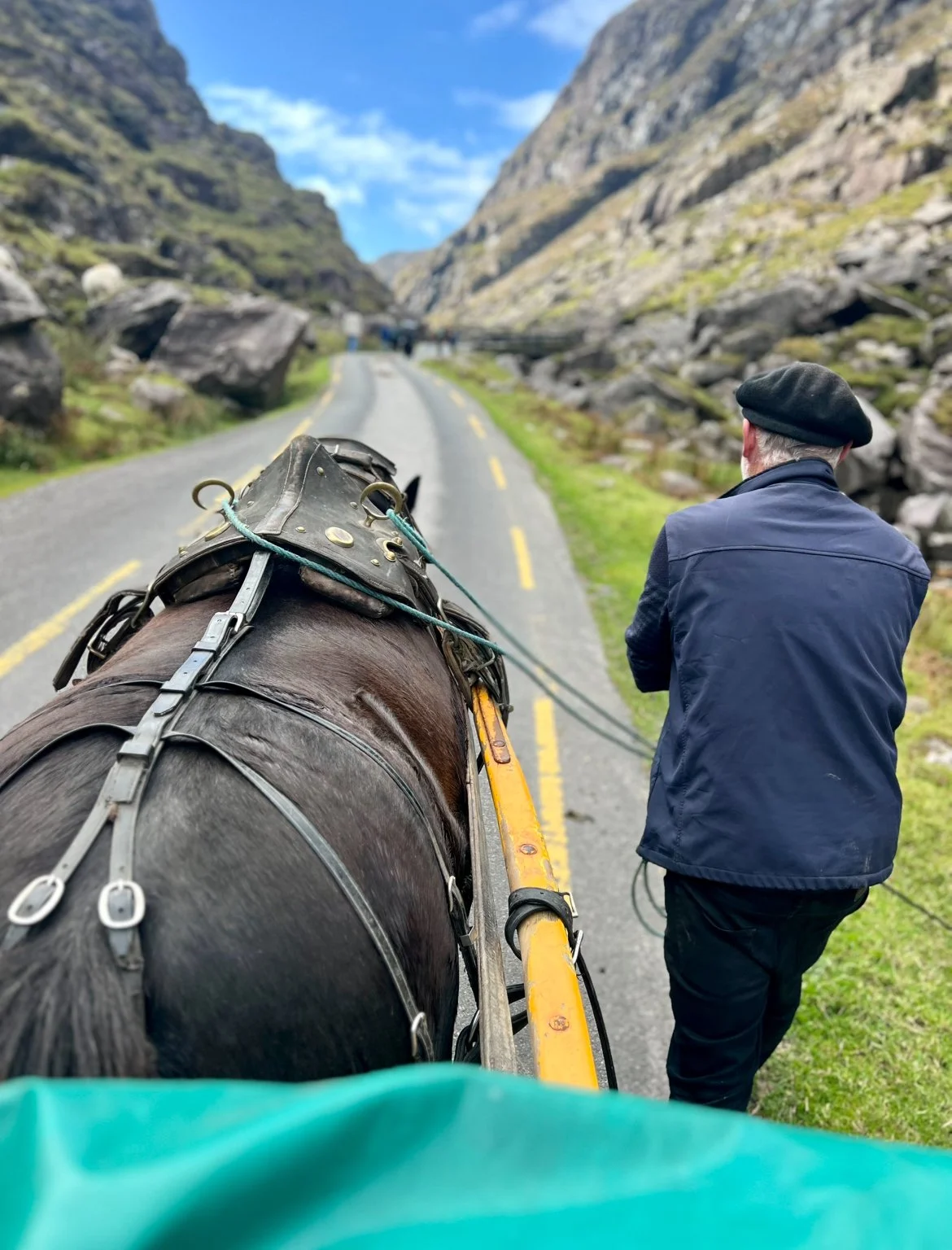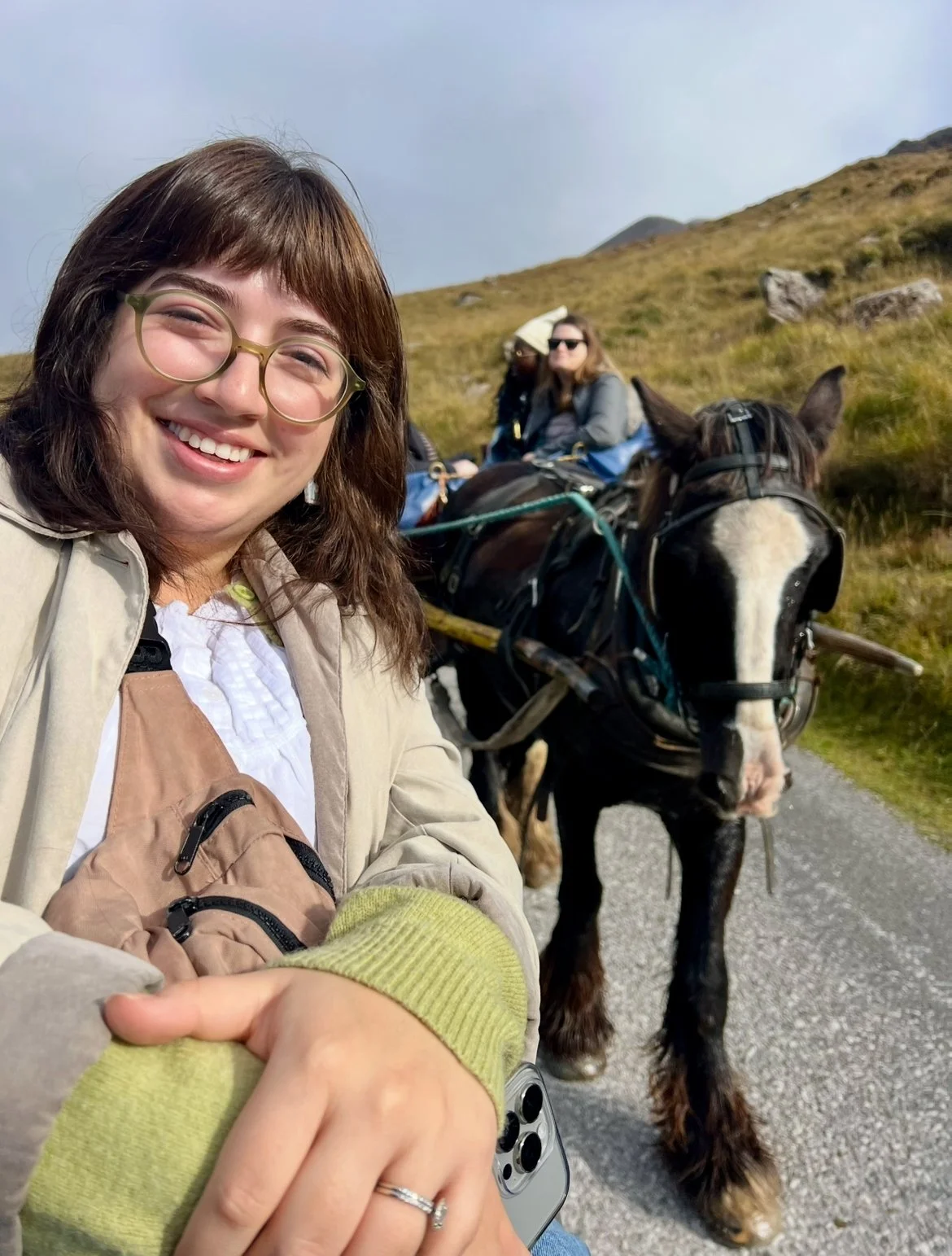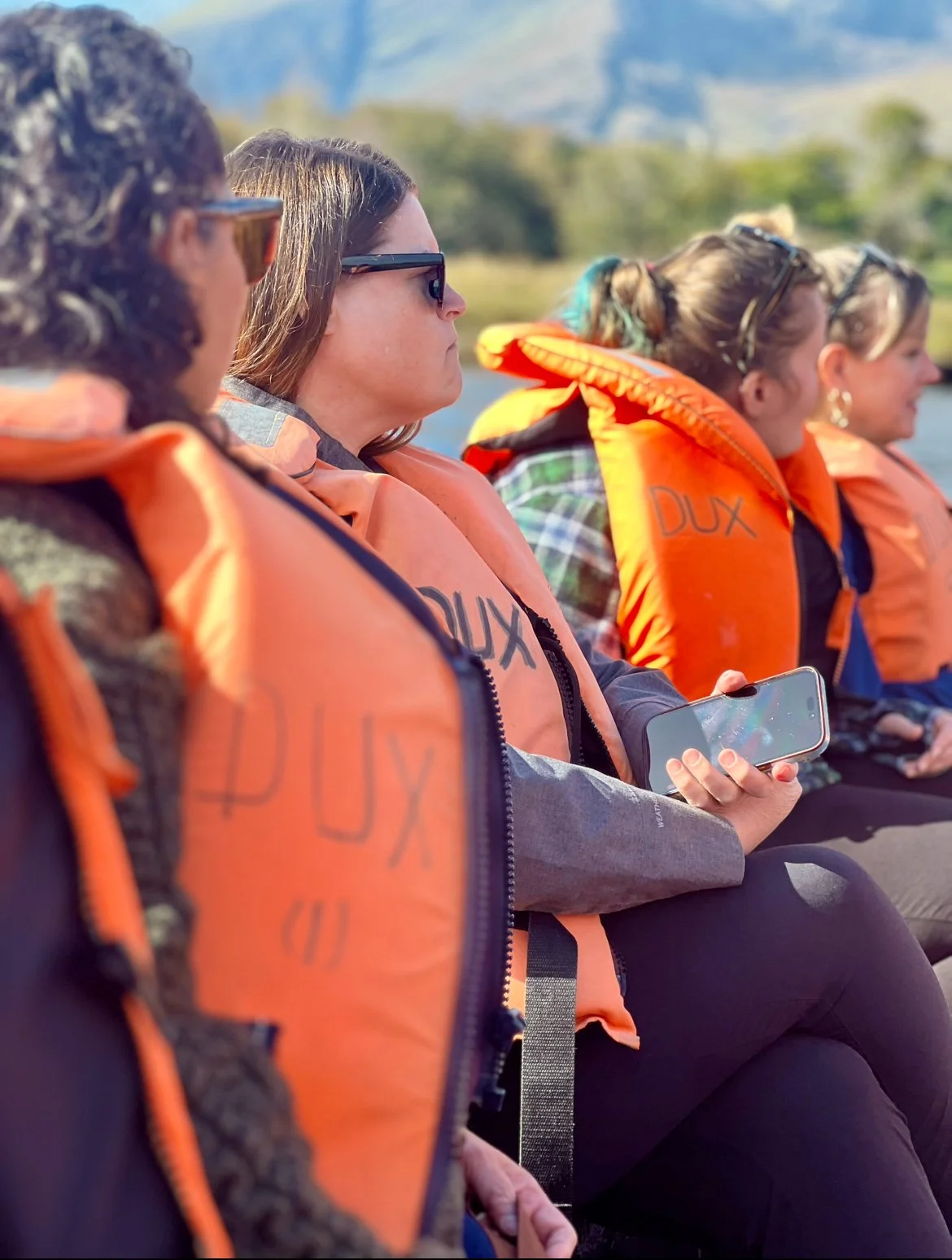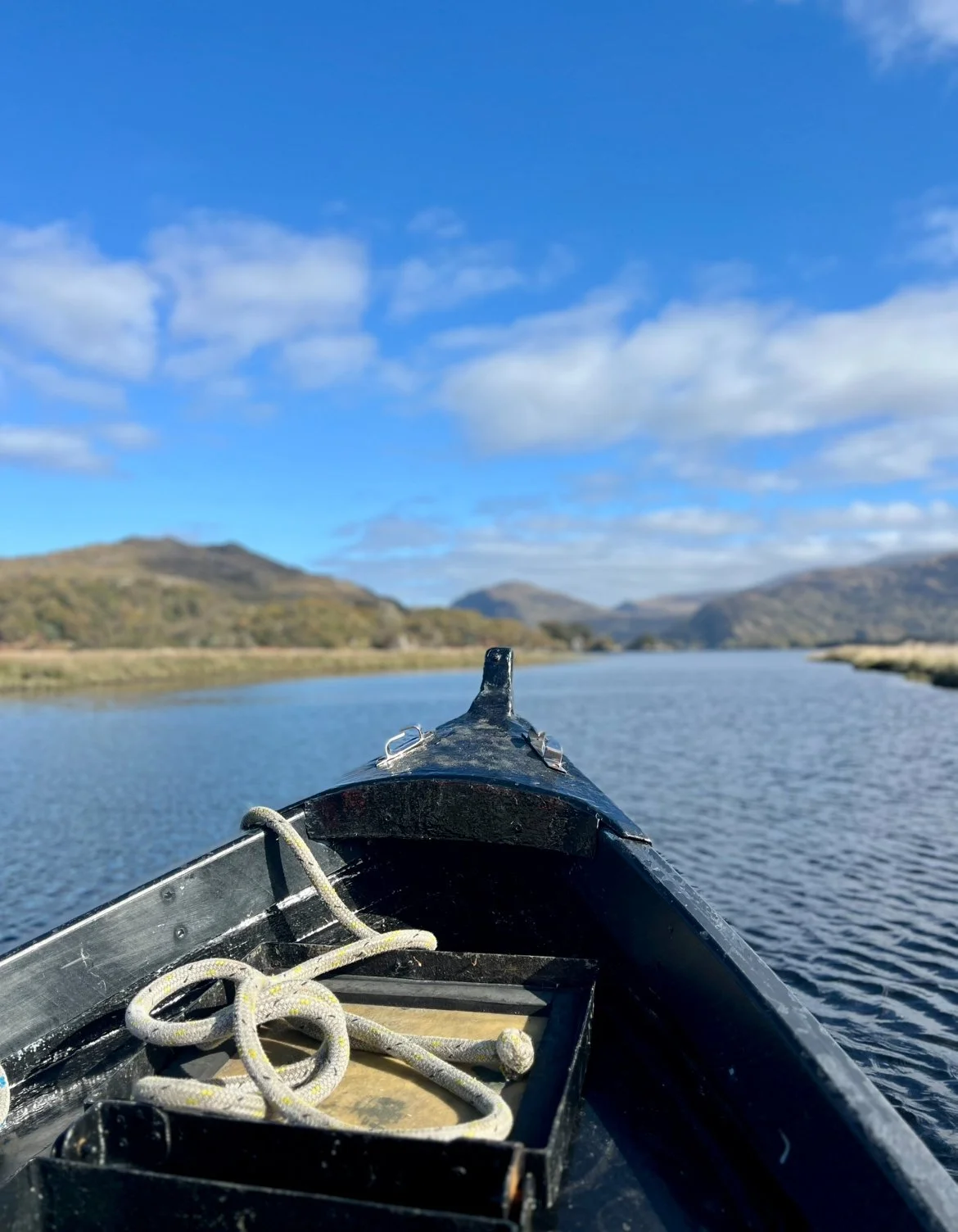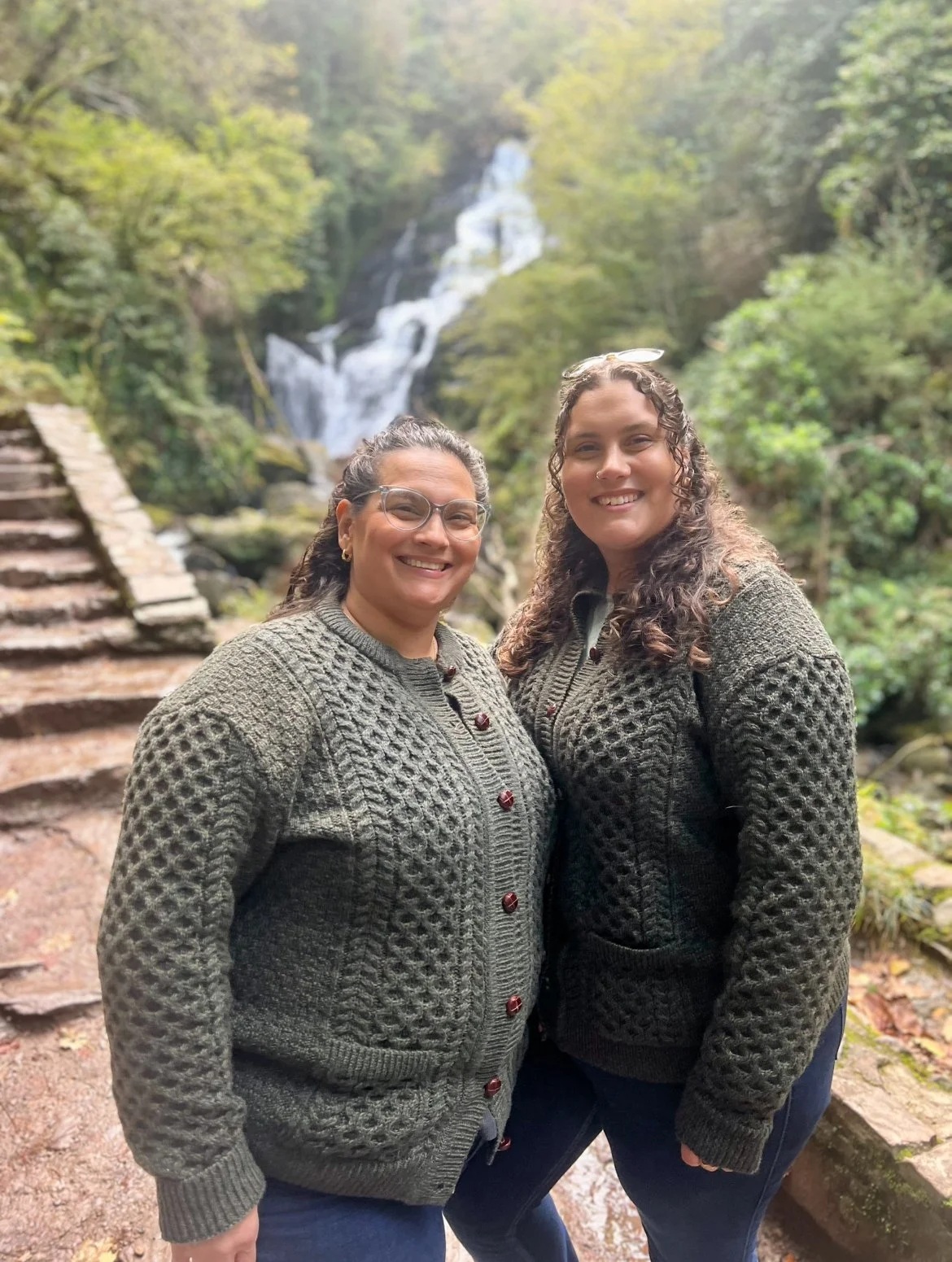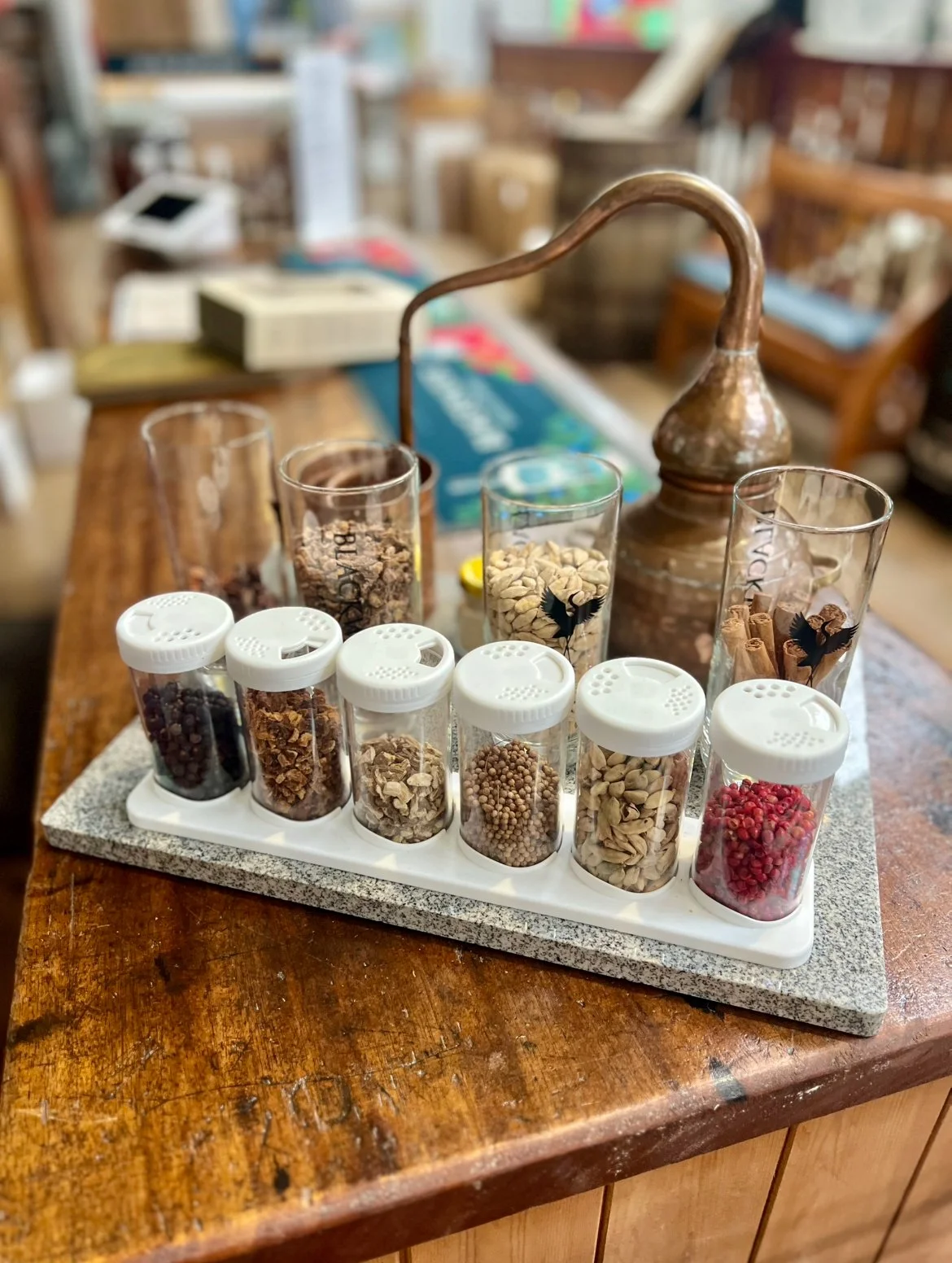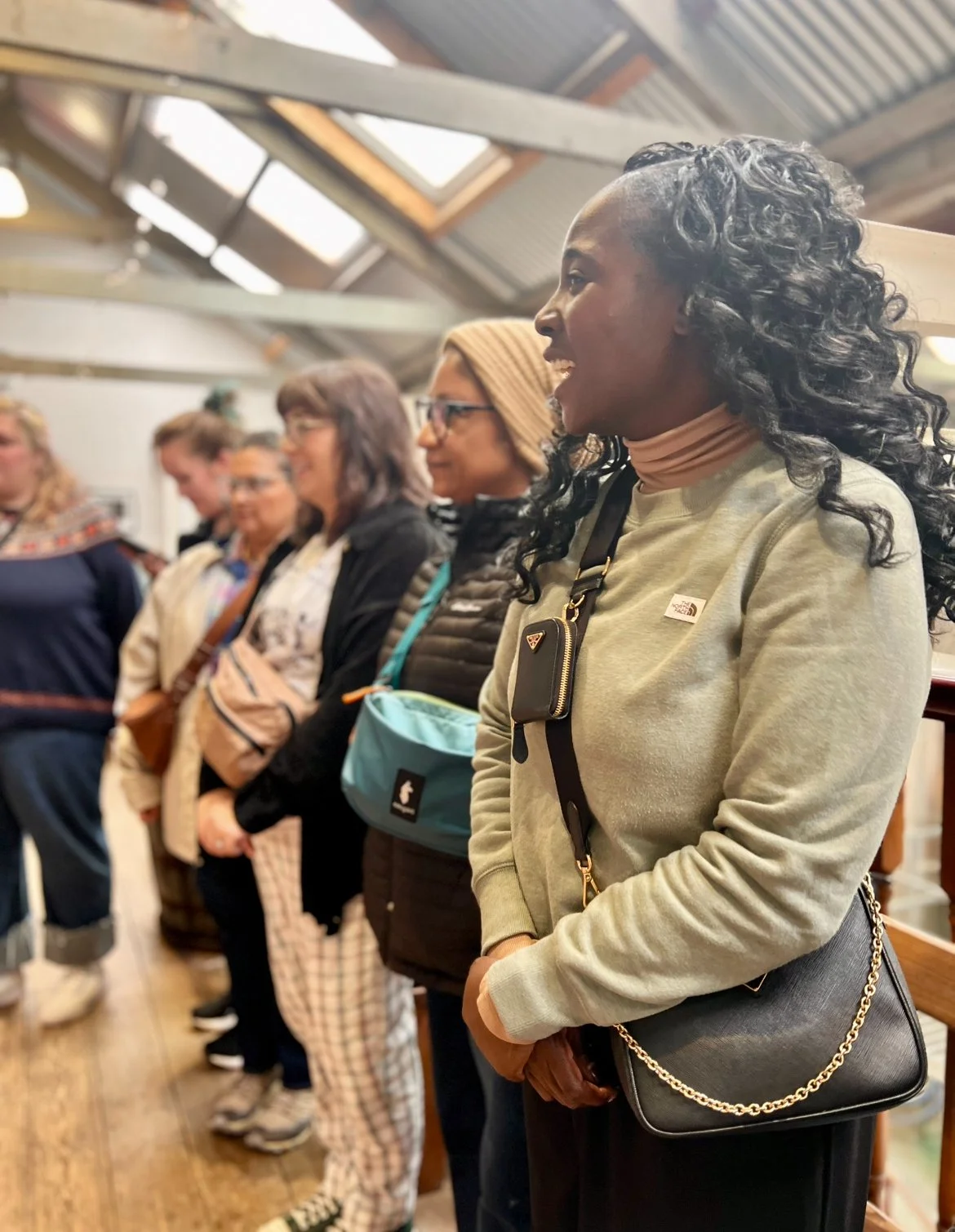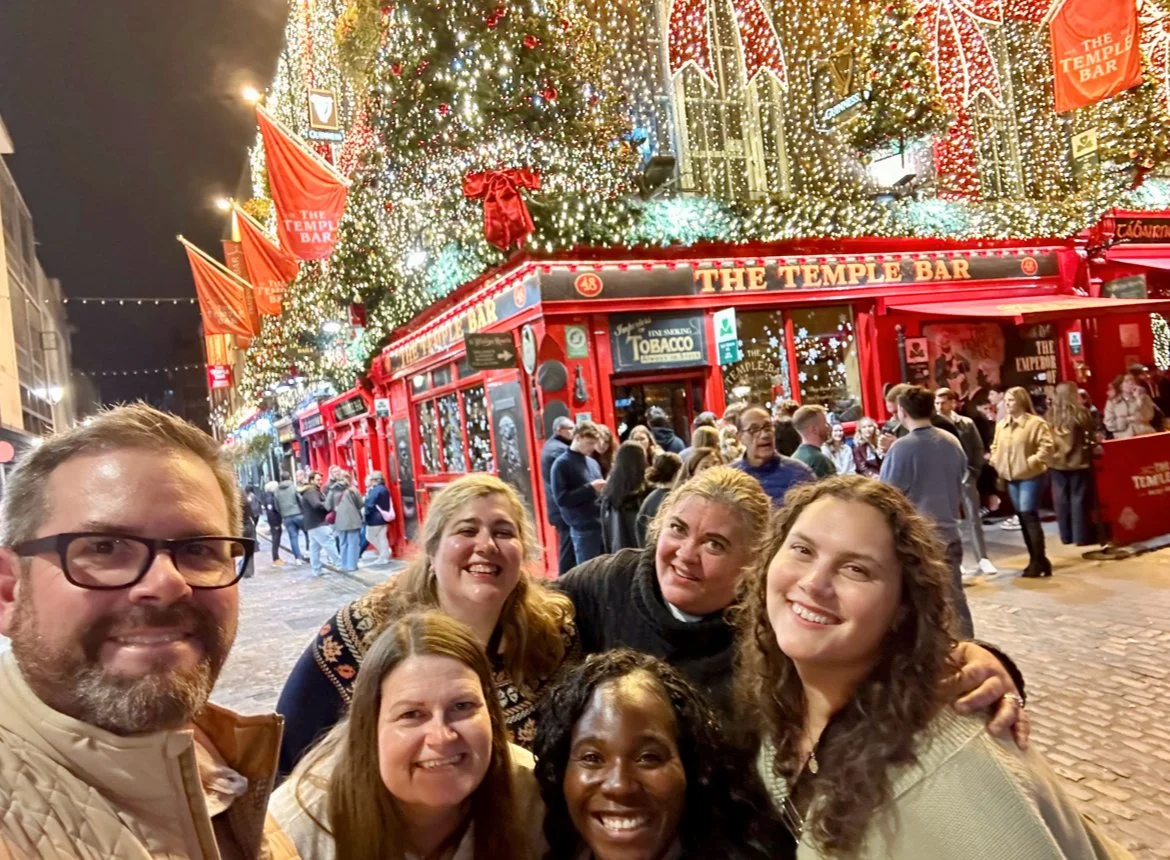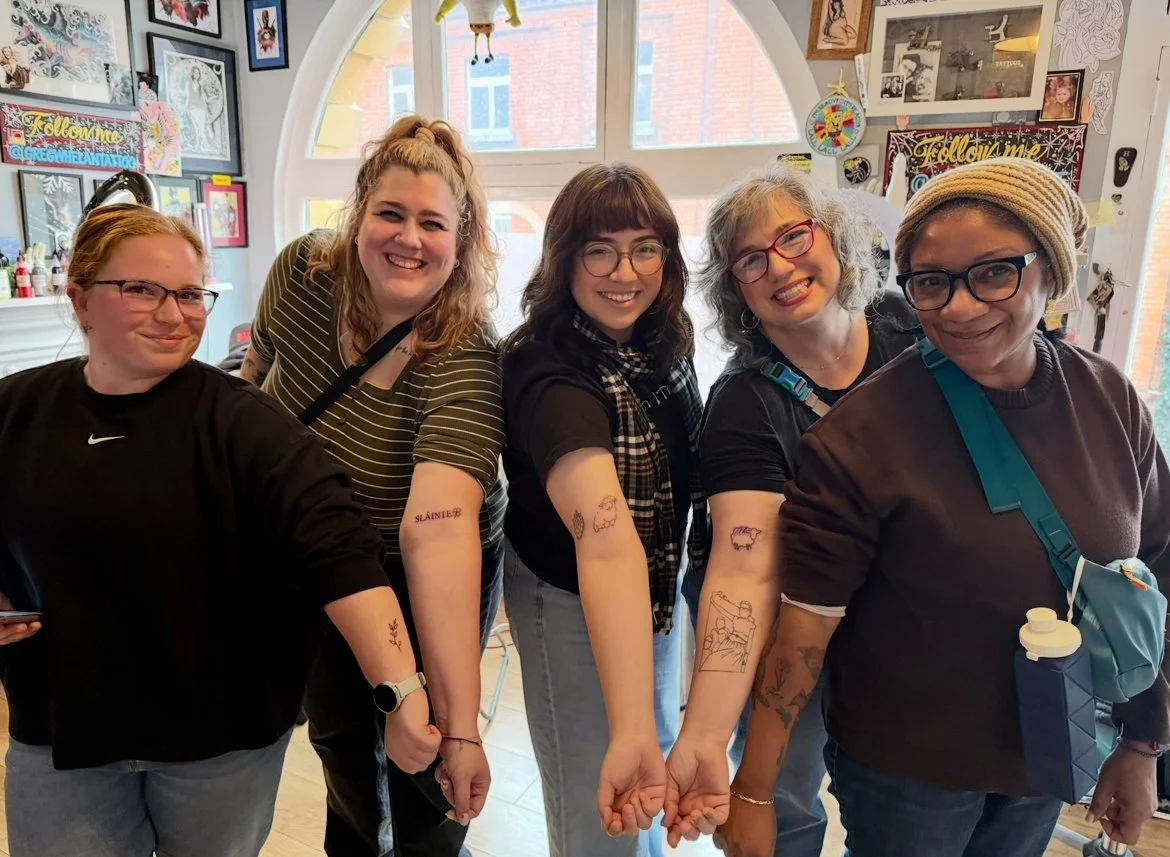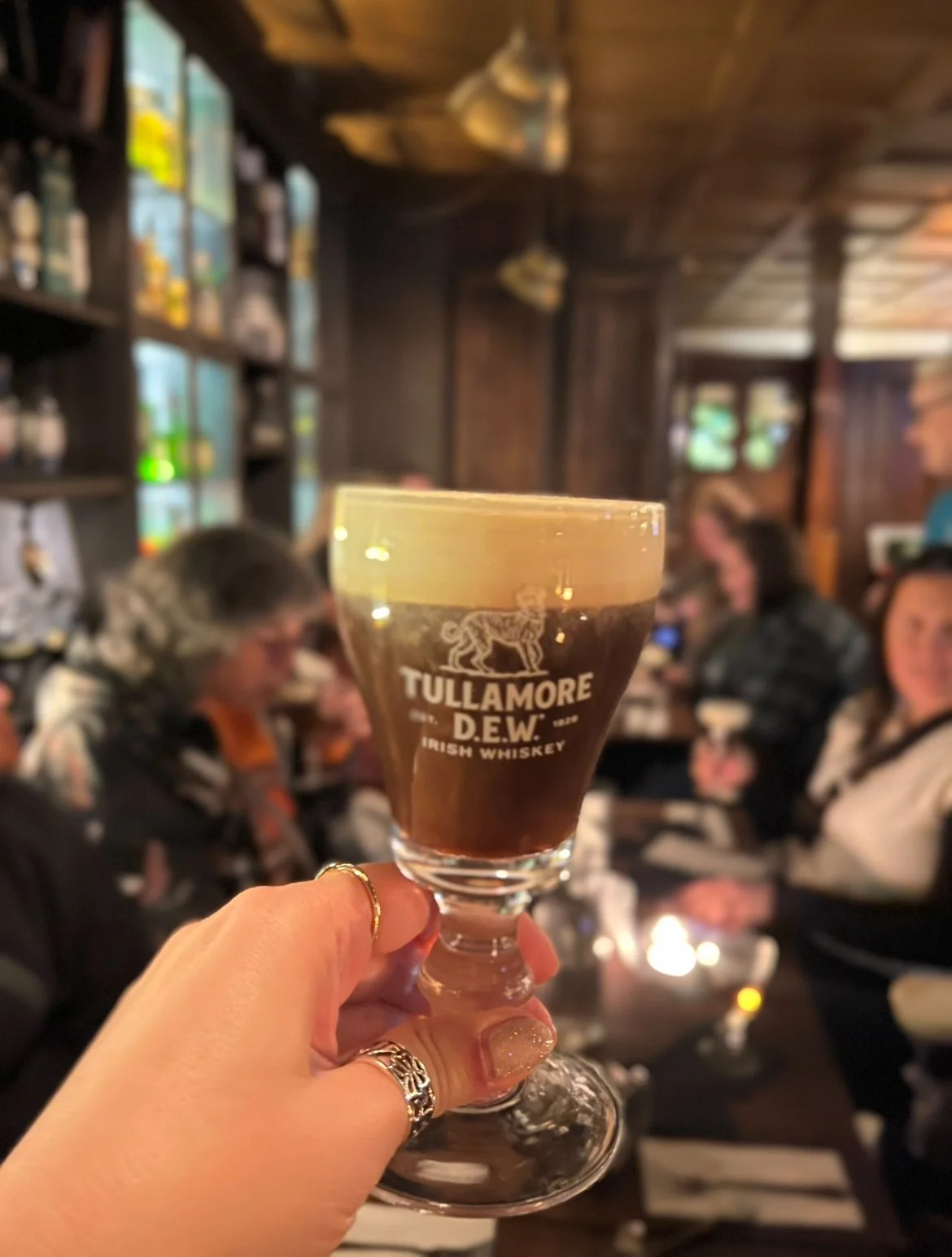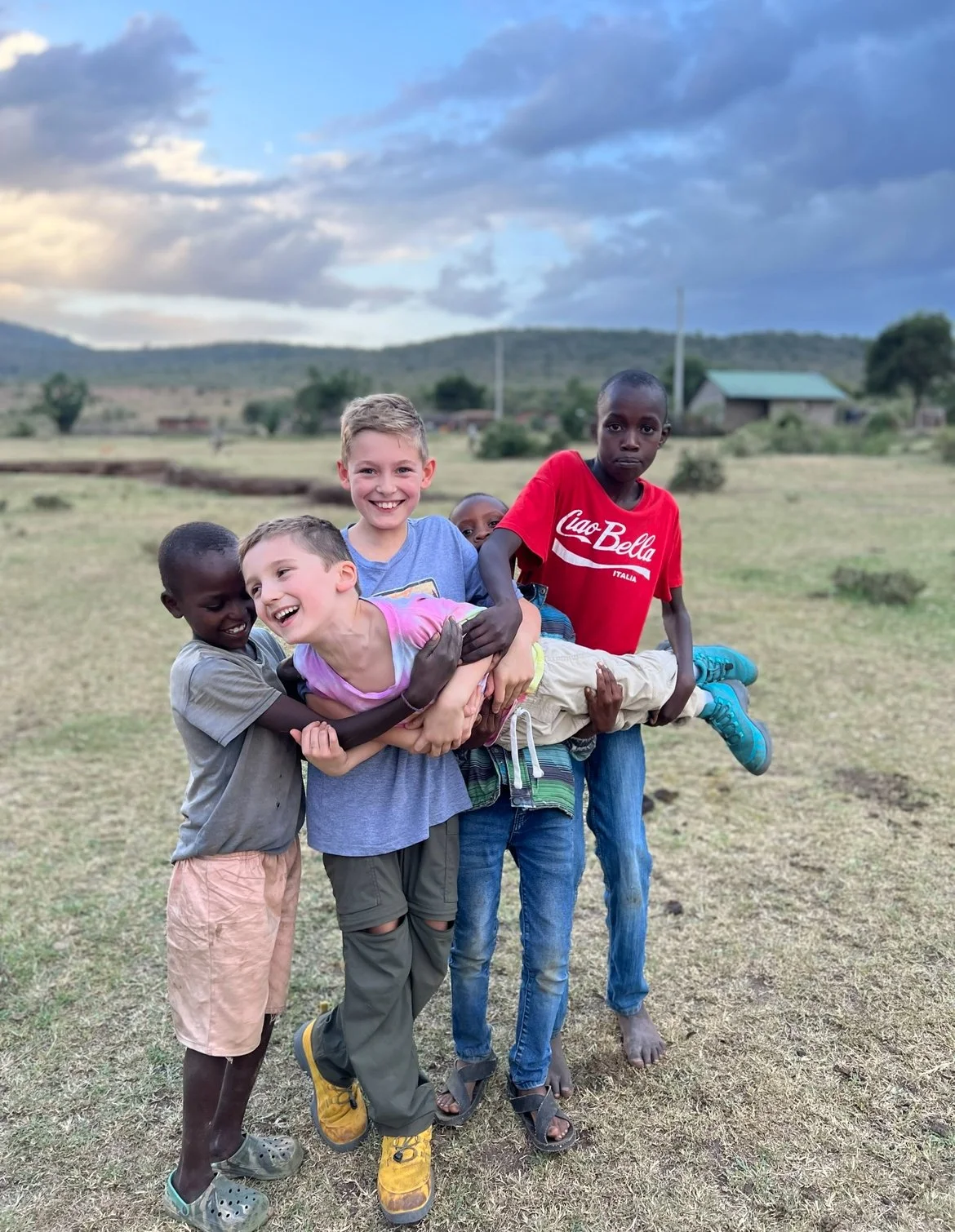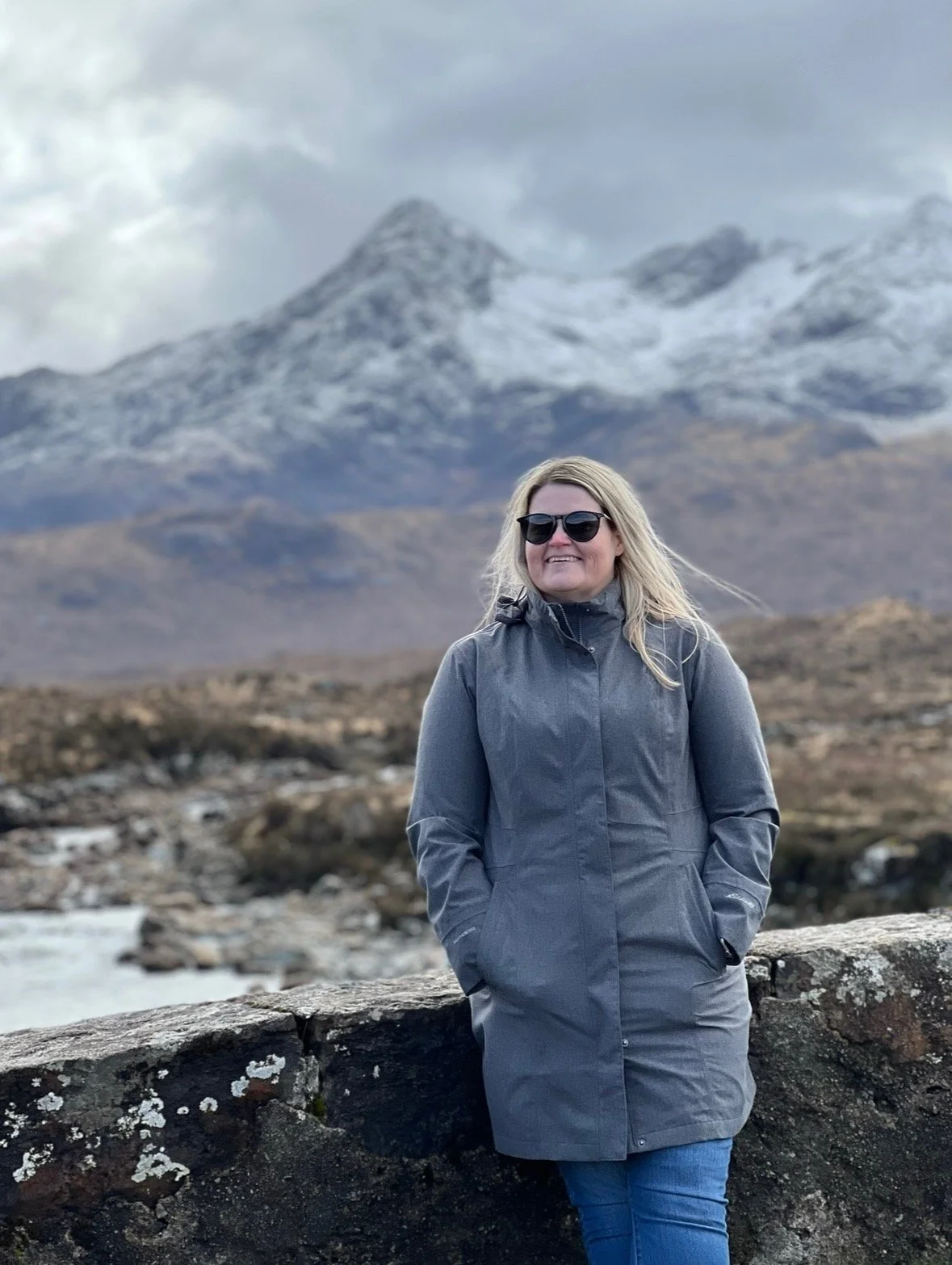They say Ireland has a way of stealing your heart, and after this trip, I finally get it. Ireland is where Land + See was born—our maiden voyage into the world of group travel eight long years ago. Coming back felt like a full-circle moment, and I couldn’t have asked for a better crew to share it with.
I’ll admit, a small part of me worried I’d seen it all already, or that revisiting might somehow fall flat. After all, three of us were on that original journey together and found ourselves here once more. I’m happy to tell you I was dead wrong. Ireland is a place that grows richer with time. The more you visit, the more it pulls you in.
We landed in Dublin, eight of us fresh off a flight from Atlanta, jet-lagged, loud, and hungry, to meet the rest of our crew, who had been knocking around England with our first ever tour manager, Mel. Once the group was back together, we met our driver, John, the kind of guy who has seen enough of life to laugh at all the right moments. Somewhere between his deadpan jokes, that voice made for late-night pubs, and a brain packed with centuries of Irish lore, John became Foxy John. And just like that, we were off, a bus full of misfit travel addicts chasing stories through a country that already felt like it knew us better than we knew ourselves.
Day 1
We started in Clonmacnoise, an ancient monastic settlement clinging to the banks of the River Shannon. Founded in the sixth century by St. Ciarán, this place was once a magnet for kings, scholars, and anyone chasing a little immortality.
The ruins still hum with that old energy. Walking among the crumbling cathedrals and round towers, you can almost hear the echo of centuries — monks chanting, scholars debating, kings being laid to rest. We leaned close to the stones, whispering our own secrets, half-expecting them to whisper something back. Outside, a few cows looked on, completely unconcerned with our nonsense.
By evening, we rolled into Galway, tired, jetlagged, and ready to taste our first night in Ireland.
Day 2
The next morning we made our way toward Tralee, stopping in the rocky heart of The Burren at Caherconnell Stone Fort. This ringfort has stood for over a thousand years, tucked into the gray limestone hills, weathering time and neglect. Archaeologists unearthed the grave of an unnamed matriarch, a woman whose presence must have been formidable—so much so that raiders tried to erase her memory.
After wandering the stone fort, we caught a sheepdog demonstration that was impossible not to laugh at. The dog, a feisty little thing named Jill, clearly had her own ideas about her job. Time and again she ignored her handler, diving headlong into the flock as if daring anyone to stop her. The shepherd, microphone in hand, finally yelled, “Jill, get out of the sheep, Jesus Christ!” The moment landed perfectly, dry, chaotic, and real. It became a running joke for the rest of the trip.
Next we drove to the Cliffs of Moher. Standing on the edge, mist rolling up from the Atlantic, it felt like staring into the edge of the world. The cliffs stretched out in both directions, stark and untamed, carved by wind and rain for centuries. There’s a kind of beauty here that isn’t polite or staged—it’s raw, a little frightening, and impossible to look away from.
Back on the bus, I noticed the girls in the back had taken to passing around fake cigarettes, puffing on them like it somehow made the hours go faster. Ana had even branded hers with “Land + See,” pitching it as future merch. I couldn’t help but admire the audacity. Not a bad idea, actually, and certainly a fun way to add a little mischief to kill the miles.
That night we rolled into Ballyseede Castle, our first taste of sleeping in a place that once belonged to kings and lords, although upon reading up on the literature of the place, the rent was once a mere 6 pounds a year! Worth it, if you ask me. The grounds were unreal—two massive Irish wolfhounds patrolling like sentries, a handful of tiny horses, and some sheep wandering like they owned the place. Rumor has it the castle is haunted by a ghost named Hilda, who announces herself with the smell of fresh roses or the distant sound of children laughing. A few of us went hunting for her, while others plotted pranks, but Hilda stayed stubbornly invisible.
The real star, though, was Stella, our waitress. Grumpy in the most perfect way, sharp as a knife and quick with a line that left the whole table laughing. When someone asked if it was okay to ask questions, she sighed and said, “If you feel you must.” Instant legend. Stella became our unofficial tour guide and an honorary member of the Land + See travel family.
Day 3
The next day we hit Slea Head Drive, one of the most breathtaking stretches of road in Ireland. Ancient beehive huts clung to the cliffs, relics from the twelfth century, and we even got to hold baby lambs—something that kept everyone grinning for what felt like hours.
Dunquin Pier came next, looking like a postcard, before we ducked into the most westerly pub in Ireland for lunch. By afternoon we rolled into Dingle, wandering the streets, poking through shops, picking up wool sweaters and Claddagh rings, and indulging in Murphy’s Ice Cream, which somehow managed to live up to every ounce of its hype. On the way back, we stopped to drink in the patchwork hills that make Ireland so achingly beautiful.
That night at Ballyseede, Stella was in rare form, sharp as ever. Symphony and I even managed a stealthy selfie with her, a small victory we boasted to the rest of the group about—we may have bribed her with the idea that Symphony was plotting her wedding at the castle.
Day 4
We hit the road again for the Ring of Kerry, and somehow the weather had decided to cooperate—blue skies, rolling green hills, and the kind of coastal views that make you forget about everything else. It happened to be Bill and Beth’s 20th anniversary, and celebrating that milestone here, surrounded by that raw, untamed beauty, made the day feel quietly extraordinary.
Dinner was in a small, local pub. Things got lively fast. We played a couple of Irish drinking games—“Fingers,” where you guess how many fingers will remain on the glass (loser downs a whiskey), and “Splitting the G,” trying to sip your Guinness so the foam lands exactly in the middle of the letter G. A few people nailed it, most didn’t, and watching everyone fail spectacularly was worth the price of dinner alone.
We closed the night with live music from two local kids, one fifteen, one nineteen. The younger one looked like he’d rather be anywhere else, probably dreaming of his bed, but the music was sharp, real, and impossible not to be swept up in.
Day 5
We started the morning with a jaunting car ride through the Gap of Dunloe—four to a cart, bundled against the chill, while our jarveys traded jokes like they were currency. At one point it hit me: Ana and the horse behind us, Buster, had the exact same haircut. Somehow, it fit.
After the ride, we slipped onto a boat with Captain Dux—who had one blue eye, one brown—for a quiet trip to Ross Castle. The water was glassy, the mountains mirrored perfectly, and for a moment, everything slowed down. Foxy John met us at the other end and, true to form, serenaded the group all the way back to the bus, making the ride feel like some magical Irish parade.
Before dinner, we made two more stops: Torc Waterfall, where the sound of rushing water drowned out everything else, and Muckross House, where Queen Victoria once stayed during her tour of Ireland in the 1800s. Standing there, history pressing in, the day felt like the perfect closing chapter to our time in Killarney. The picture at Muckross is of our “dynamic mother-daughter duos”—a knock at me for overusing that phrase when introducing all three groups to one another. Are they laughing at me in this photo? Probably.
Day 6
We said goodbye to Killarney and hit the road for Dublin, but first, a detour to the Blackwater Distillery. Nestled on the banks of the Blackwater River. The place was the kind of passion project you only attempt when you’ve quit a nine-to-five in film or theater and decided to chase something that actually matters.
Gin, vodka, Irish whiskey—they make it all. We learned a bit about the distilling process, met the head distiller, and sampled more than a few spirits. Strictly educational, of course.
Afterward, we stopped at the Rock of Cashel, a medieval fortress perched on a limestone hill. Once the seat of the kings of Munster, later a religious center, it rises out of the countryside like a monument to ambition and time. Standing there, looking at the ruins and the views, it’s impossible not to feel small.
By evening, after a full-bus sing-a-long, we rolled into Dublin, exhausted but in that rare, happy way you feel after a trip that’s gone just right. Dinner done, a few of us wandered into Temple Bar, chasing live music and early Christmas lights, letting the city close out our Irish story in the loud, chaotic, perfectly imperfect way only Dublin can.
Day 7
We had a free morning to wander Dublin however we liked. Some of us made the pilgrimage to Trinity College to gape at the Book of Kells and the library that looks like it was lifted straight out of a dream. Others gravitated toward the Guinness Storehouse, because, of course, when in Dublin. And then there were the brave few who marked the trip permanently with travel tattoos—an act equal parts impulsive and beautifully reckless. Dublin has a way of making you do things you didn’t know you’d do, and somehow it all felt right.
That evening we met Lara, a local foodie with a sharp tongue and an encyclopedic knowledge of Dublin’s flavors, and set off on a food trail that quickly became one of the trip’s highlights. We sampled craft brews, dug into local staples like Cottle stew and finished with a hands-on lesson in making the perfect Irish coffee.
The night wound down like the best tours always do—with Angela, our reluctant poet laureate, holding court. She’s got this sly way of making us laugh at ourselves, at each other, at the absurd little corners of our own lives we’d rather ignore. Somehow, between the jokes and the teasing, she welds us together, a ragtag crew bound by nothing more than shared experience and the kind of laughter that sticks to your ribs.
Day 8
And just like that, it was time to leave. Bags a little heavier, hearts way fuller, we made our way home, already missing Foxy John, Stella, and the quiet, wild magic that makes Ireland, well, Ireland.
No ghosts showed up to say goodbye, but there was laughter, adventure, and more craic than you could shake a stick at. This wasn’t a trip you just remember—it’s the kind of trip that lingers, that settles into your bones long after the plane lands.

